List of Freedom Fighters Incarcerated in Cellular Jail | List of Freedom Fighters jailed for Kaala Pani
Note: Most of the freedom fighters in this list do not have any wiki/news page and we cannot find any data about them on the internet. Those who have a wiki or news page are listed with data and images, for others only name is given. If you have data related to any freedom fighter, please comment below so everyone can be aware about the sacrifices made by them.
Kala Singh
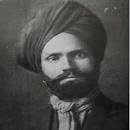
Kala Singh, son of Gulab Singh was a resident of Amritsar. His father was a Carpenter by profession. Kala Singh took an active part in anti-British activities. He was involved in the first Lahore Conspiracy Case of 1915. He took part in Chabba Dacoity.
The first in the series of dacoity was attempted on 23 January 1915 at village Sahnewal in Ludhiana District, followed by a 27 January attack at village Mansuran of the same district, 29 January at Jhanir (Manerkotla), and the fateful one at Chabba (Amritsar) on 02 February 1915. He participated in Chabba dacoity but unfortunately, he was captured on the spot. Bombs and pistols were used in this dacoity and when captured he had in possession two cartridges. In the Chabba dacoity, Surain Singh, one of the participants who have a personal enmity with the head of a family, quietly left the group of Kala Singh, came back and killed him. Amritsar Police got ed and they were able to plant a police agent namely Kirpal Singh at the party. Indeed this particular dacoity proved to be the main event responsible for the failure of their further missions.
Kala Singh was trialed and convicted under Sections 121, 121A, and 396 of IPC, and on 13 September 1915 he was sentenced by the Lahore Tribunal to death and forfeiture of property. Later on, his sentence was reduced by the Lieutenant-Governor to transportation for life. He was deported to Cellular Jail at Port Blair in the Andaman Islands in 1916.
Read More About Kala Singh / Source
Chattar Singh
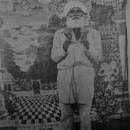
Chatar Singh hailed from the village of Maneli in the Ambala district (now Fatehgarh Sahib). His family had moved to the canal colony of Lyallpur district because his father had received land from the British. He had a good education and taught at Sangla Hill School (Nankana Sahib, Pakistan). He was tall and attractive. Under the influence of the Ghadar movement, Chattar Singh attempted to murder Professor Duncliff with a chhawi (a sharp-edged weapon) on 16 December 1914 at Khalsa College, Amritsar. He was apprehended and charged under Section 307 of the Indian Penal Code and sentenced to life in prison. In the Lahore jail, he joined other ghadarites, and his first agitation began when he refused to wear the jail cap instead of a turban. As a result of this agitation, he had to endure many hardships, but he did not give in to pressure. He was later imprisoned in Andaman alongside the Ghadar Party freedom fighters. Baba Wisakha Singh, an important Ghadar Party leader praised Chatar Singh’s commitment to the Indian motherland. In Cellular Jail, the superintendent insulted him. Chatar Singh openly challenged the superintendent of the jail to change his ways. Following that, Chatar Singh severely thrashed him and avenged his wrongdoings against the ghadarites. Later on, jail guards severely beat him. He was confined to a solitary cell and denied food for several days. He was kept in inhumane conditions for many years. Although he was not a member of the Ghadar Party and joined them only in jail, he was revered by Baba Wasakha Singh and other freedom fighters.
Read More About Chattar Singh / Source
Ganesh Damodar Savarkar
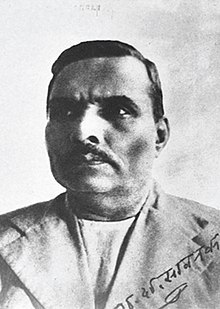
Ganesh Dāmodar Sāvarkar (13 June 1879 – 16 March 1945), also called Babarao Savarkar, was an Indian politician, activist, nationalist, and founder of the Abhinav Bharat Society.Ganesh was the eldest of the Savarkar brothers, Ganesh, Vinayak, and Narayan, they also had a sister Mainabai, who was the penultimate child of their parents, Narayan being the youngest.: 107 His parents’ death laid the liability of his family at an age of twenty years.
He led an armed movement against the British colonial government in India, he was sentenced to transportation for life as a result. The then collector of Nasik, A. M. T. Jackson was assassinated by Anant Laxman Kanhere in retaliation.: 117 Dhananjay Keer describes Jackson as “part of the oppressive machinery of the British Empire” and “…responsible for deporting Babarao…”: 197 M. J. Akbar writes that “The five friends who started the RSS were B. S. Moonje, L. V. Paranjpe, Dr. Tholkar, Babarao Savarkar and Hedgewar himself”.: 306 Rity Kohli writes that Savarkar’s essay on nationalism “Rashtra Mimansa”: 471 was abridged into “We, and our Nationhood, Defined”, by Golwalkar, in 1938, which was the first systematic statement of the Rashtriya Swayamsevak Sangh ideology.
Read More About Ganesh Damodar Savarkar / Source
Laxmi Kant Shukla
Laxmi Kant Shukla was a revolutionary freedom fighter of India. Born 1930 at Unnao, U.P. s/o Pt. Gopi Krishna Shukla. Joined the H.S.R.A. Sentenced for life in 1930. Sent to Andamns same year.
Read More About Laxmi Kant Shukla / Source
Maulvi Liaquat Ali
Maulvi Liaquat Ali (1817-1892) was a Muslim religious leader from Allahabad (Prayagraj), in the state of Uttar Pradesh in present-day India. He was one of the leaders in the revolt against the British in 1857, in what is now known as the First Indian war of Independence, or the uprising of 1857. As one of the most prominent leaders, Maulvi Liaqat Ali belonged to Village Mahgaon in Pargana Chail of District Prayagraj. He was a religious teacher, an upright pious Muslim, and a man of great courage and valour. His family traced their descent from the Zainabi Jafri branch of Hashmis which had their offshoots at Jaunpur and other places. He was a humble and simple man but when he took the reins of the freedom struggle, he became a dreadful enemy of the British.
The Zamindars of Chail were his relatives and followers, and they supported Maulvi with their men and ammunition. Consequently, it was with great difficulty that the British regained control of the city of Allahabad after the Maulvi captured the Khusro Bagh and declared the independence of India Khusro Bagh became the headquarters of the sepoys under Maulvi Liaquat Ali who took charge as the Governor of liberated Allahabad. however, the Mutiny was swiftly put down and Khusro Bagh was retaken by the British in two weeks.
He escaped from Allahabad with a few Friends and rebel sepoys after the British recaptured the city, but was caught after 14 years in September 1871 at Byculla railway station in Mumbai. He was tried and sentenced to death, but died in captivity in Rangoon (Present-day Yangon) on 17 May 1892. He had married and had a daughter. Her descendants and further generations are still found in and around Pargana Chail and some migrated to Pakistan after independence. The famous Amelia Horne (also known as Amy Horne and Amelia Bennett) was a 17-year-old survivor of the alleged Siege of Cawnpore. She was a witness for the 1872 trial of Liaquat Ali, and was presented in Liaquat Ali’s defense as he saved her life. Liaqat Ali was sentenced to life in prison at Port Blair, in one of the Cellular Jail in Andaman Islands. He had a daughter named Amtullah Bibi who then had a son Hafiz Nazir Ahmed. Hafiz Nazir Ahmed had two sons and three daughters the sons (Zamir Ahmed Jafri & Zaheer Ahmed Jafri) later migrated to Pakistan after its creation in 1947. Elder Zamir Ahmed Jafri had three sons who all are settled in pakistan. With half the family settled in mehngao India and half in karachi pakistan.
Read More About Maulvi Liaquat Ali / Source
Qaim Khan
Qaim Khan was a resident of Nimar (sometimes spelled as Nimad) of the Malwa region under the Central India Agency (now Madhya Pradesh). During the First War of Independence in 1857, Nimar’s tribal and non-tribal warriors and other revolutionaries fought against the British inspired by Mangal Pandey, Bheema Nayak and other regional leaders. Besides looting the treasury, the revolutionaries valiantly fought against the British. The Bhils, who were never very happy with the usurpation of their lands by the British, rose in revolt in what has come to be known as ‘The Great Bhil Rebellion of 1857-60’. After Tantya Tope’s arrival in Nimad in 1857, several Holkar employees and citizens joined the revolt against the British. Qaim Khan joined the anti-British rebel forces during the Uprising of 1857. He played an active role in fighting against the British troops at Mandleshwar (sometimes spelled as Mandaleshwar). The British made several attempts to crush the rebels but in vain but soon the British summoned up forces from other areas in addition to the local Corps and used a combination of force to subdue this rebellion. They were successful in the arrest of many of the revolutionaries addressed to be dangerous by them. Qaim Khan and his associates were also captured. Qaim Khan was convicted as a rebel against the British and sentenced to transportation for life across the sea. He was deported to the Andaman Islands where he died in detention.
Read More About Qaim Khan / Source
Vinayak Damodar Savarkar
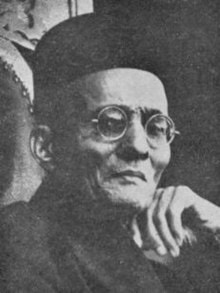
Vinayak Damodar Savarkar (pronunciation ), Marathi pronunciation: [ʋinaːjək saːʋəɾkəɾ]; also commonly known as Veer Savarkar (28 May 1883 – 26 February 1966), was an Indian politician, activist, and writer.
Savarkar developed the Hindu nationalist political ideology of Hindutva while imprisoned at Ratnagiri in 1922. He was a leading figure in the Hindu Mahasabha. He started using the honorific prefix Veer meaning “brave” since he wrote his autobiography.Savarkar joined the Hindu Mahasabha and popularized the term Hindutva (Hinduness), previously coined by Chandranath Basu, to create a collective “Hindu” identity as an essence of Bharat (India). Savarkar was an atheist but a pragmatic practitioner of Hindu philosophy.Savarkar began his political activities as a high school student and continued to do so at Fergusson College in Pune. He and his brother founded a secret society called Abhinav Bharat Society. When he went to the United Kingdom for his law studies, he involved himself with organizations such as India House and the Free India Society. He also published books advocating complete Indian independence by revolutionary means. One of the books he published called The Indian War of Independence about the Indian Rebellion of 1857 was banned by the British colonial authorities.In 1910, Savarkar was arrested and ordered to be extradited to India for his connections with the revolutionary group India House. On the voyage back to India, Savarkar staged an attempt to escape jumping from steamship SS Morea and seek asylum in France while the ship was docked in the port of Marseilles. The French port officials however handed him back to the British government. On return to India, Savarkar was sentenced to life terms of imprisonment totaling fifty years and was moved to the Cellular Jail in the Andaman and Nicobar Islands.
He was released in 1924 by the British officials after he wrote a series of mercy petitions to the British. He virtually stopped any criticism of the British regime after he was released from jail.After 1937, he started traveling widely, becoming a forceful orator and writer, advocating Hindu political and social unity. In 1938, he was a president of Marathi Sahitya Sammelan in Mumbai. Serving as the president of the Hindu Mahasabha, Savarkar endorsed the idea of India as a Hindu Rashtra (Hindu Nation). Savarkar assured the Sikhs that “when the Muslims woke from their day-dreams of Pakistan, they would see established instead a Sikhistan in the Punjab.” Savarkar not only talked of Hindudom, Hindu Nation and Hindu Raj, but he wanted to depend upon the Sikhs in the Punjab to establish a Sikhistan.By 1939, Savarkar committed an alliance with the Muslim League in 1939 after both were decimated by the Indian National Congress. He also supported the two-nation theory. He was openly critical of the decision taken by the Congress working committee in its Wardha session of 1942 to a resolution which said to the British colonial government: “Quit India but keep your armies here”, which was intended to defend India against a possible Japanese invasion. In July 1942, as he felt extremely stressed carrying out his duties as the president of Hindu Mahasabha, and as he needed some rest, he resigned from the post, the timing of which coincided with Gandhi’s Quit India Movement.In 1948, Savarkar was charged as a co-conspirator in the assassination of Mahatma Gandhi; however, he was acquitted by the court for lack of evidence.
Read More About Vinayak Damodar Savarkar / Source
Hazara Singh
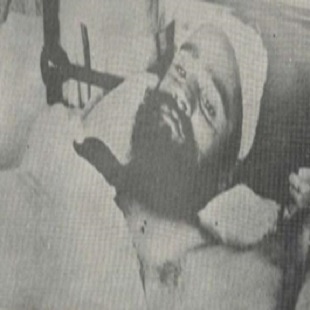
Trade union leader and freedom fighter Hazara Singh was born in the early 1910s in Bhalri village of Hoshiarpur district, Punjab. His real name was Banta Singh. He joined the Independence struggle at a very young age. Imprisoned several times by the British, he was an unwavering soul who fought for the people in Punjab, Madras, Port Blair, and the coal fields of Bihar (now Jharkhand) until he finally attained martyrdom in Jamshedpur. The first Kirti Kisan Party convention was held in Hoshiarpur on October 6 and 7, 1927, and it was perhaps only then Singh began to interact with the revolutionaries of Kirti Lehar. He was simultaneously also involved with Bhagat Singh’s Naujawan Bharat Sabha. Hazara Singh planned to kill the Governor of Madras. But the plan was leaked to the police and he was arrested. He was sent to Cellular Jail for transportation for life. In 1937, after a prolonged hunger strike, he and other prisoners came out of jail. After release, he again became active in the national movement. Hazara Singh attended the secret Kirti Party convention at Chak Maidas village near Hoshiarpur, where he was tasked by the party’s senior leaders with intensifying the movement in Jamshedpur. Meetings were conducted in the labor settlements under the communist banner, led by Hazara Singh. The workers were galvanized to go on strike. On July 2, the striking workers picketed the factory gate, blocking it. Some of the company’s lorries wanted to take workers who did not participate in the strike into the company. The workers surrounded the lorry and Hazara Singh stood in front of the lorry, placing his hand on the bonnet. When the lorry moved forward slightly, Hazara Singh took a few steps back. But Amar Singh, a stooge of factory owners, ran the lorry over Hazara Singh on the company premises. Hazara Singh was immediately brought to a nearby hospital where he was declared dead. Thousands of laborers attended Hazara Singh’s last rites. But unfortunately, now there is not even a small monument for such a revolutionary in the city.
Read More About Hazara Singh / Source
Kusal Singh

Kusal Singh, son of Suchet Singh was a resident of Amritsar of Punjab. He was arrested in the First Lahore Conspiracy Case. The First Lahore Conspiracy Case of 1915, was a series of trials held in Lahore (then part of the undivided Punjab of British India), and in the United States, in the after of the failed Ghadar conspiracy from 26 April to 13 September 1915. The trial was held by a Special tribunal constituted under the Defence of India Act 1915. Kusal Singh was declared accused and given a Death sentence which was later commuted to transportation for life on 13 September 1915 and the greater number of the accused had been concerned were the gatherings at Jhar Sahib in the Amritsar District in November 1914, those at Gujrawal and Lohatbadi in the Ludhiana District and Nabha state in January and February 1915, the abortive raid on the Ferozepore cantonment in February 1915, and that on the Kapurthala State magazine in June 1915. Kusal Singh was charged under various sections of the Indian Penal Code. He was transported to the Cellular Jail of Port Blair in the Andaman Islands and reached Andaman in October 1915 where he was allotted Convict No. 38377.
Read More About Kusal Singh / Source
Mohan Kishore Namadas
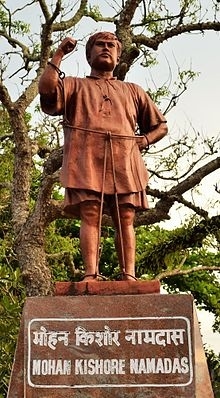
Mohan Kishore Namadas was an Indian revolutionary and independence fighter in the 1930s.
Read More About Mohan Kishore Namadas / Source
Natha Singh
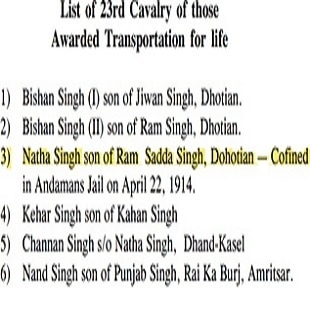
Natha Singh belonged to Dhotian village in Amritsar. Sadda Singh was his father’s name. He joined the 23 Cavalry (Frontier Force) as a sowar. This force was part of the personal escort of Punjab’s Governor Michael O’ Dwyer. He came into contact with a Ghadar Party member Prem Singh of Sur Singh village. One of the major aims of the Ghadar Party’s programme was to persuade the Indian troops to join the movement. The Ghadar Party wanted to use the soldiers of India to overthrow British rule. The sowars of 23 Cavalry were won over by Prem Singh and they promised to march out and join the armed rebellion at the appointed hour. Ghadar Party sent emissaries to all cantonments in Northern India. Prem Singh met Natha Singh and his associates and took them into his confidence. The date for the general uprising was fixed for November 30, 1914. Later on, the date was postponed. British officers were completely unaware about the involvement of the 23rd Cavalrymen in the planned uprising of the Ghadar Party. 19 February 1915 plan of uprising was also nipped in the bud by the British. Meanwhile, the army unit was transferred to the United Province. On May 13, 1915, the Sikh soldiers of the 23rd Cavalry were being shipped from Nowgong Cantonment in UP (now MP) to the war front. On the way, at Harpalpur Station (MP), bombs exploded in a wooden box belonging to one of the soldiers. Two soldiers were arrested and sent to Jutogh Cantonment, near Shimla. The explosion gave the officials the clue of the plan of the sowars to join the Ghadar revolution. Later on, others were also arrested and their links to the Ghadar Party were discovered. This led to the detention of eighteen men, all belonging to the troops 23rd Cavalry. A court martial was held in Dagshai, near Shimla. Natha Singh was sentenced for life imprisonment in Cellular Jail. During this time, Michael O’Dwyer was the Governor of the Punjab and he personally monitored the trail of 23rd Cavalry persons.
Read More About Natha Singh / Source
Prithvi Singh Azad
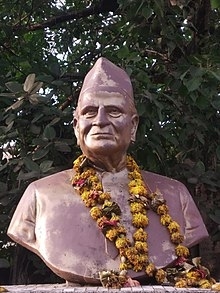
Prithvi Singh Azad (1892–1989) was an Indian independence activist, socialist revolutionary and one of the founder members of Ghadar Party. He suffered incarceration several times during the pre-independence period, including a term in the Cellular Jail. The Government of India awarded him the third highest civilian honour of the Padma Bhushan, in 1977, for his contributions to society.
Read More About Prithvi Singh Azad / Source
Roda Singh

Roda Singh, son of Wasawa Singh was a resident of Roda, Bhagapurana, Ferozpur of Punjab. He was arrested in the First Lahore Conspiracy Case. The Lahore Conspiracy Case trial or First Lahore Conspiracy Case of 1915, was a series of trials held in Lahore (then part of the undivided Punjab of British India), and in the United States, in the after of the failed Ghadar conspiracy from 26 April to 13 September 1915. The trial was held by a Special tribunal constituted under the Defence of India Act 1915. Roda Singh was one of the 45 accused who was sentenced for transportation for life on 13 September 1915 and the greater number of the accused had been concerned were the gatherings at Jhar Sahib in the Amritsar District in November 1914, those at Gujrawal and Lohatbadi in the Ludhiana District and Nabha state in January and February 1915, the abortive raid on the Ferozepore cantonment in February 1915, and that on the Kapurthala State magazine in June 1915. Roda Singh was charged under sections 121 (Waging war) and 121-A (Conspired to wage war) of the Indian Penal Code. He was transported to the Cellular Jail of Port Blair in the Andaman Islands and deported to Andaman in January 1916. He was released in 1930.
Read More About Roda Singh / Source
Gulab Khan
Gulab Khan was deported on transportation from Western Punjab to the Andaman Islands during the British regime. He was a school teacher. He lived in Bambooflat of South Andaman.
In the Second World War, the Japanese occupied the Andaman Islands in March 1942. During the Japanese occupation, Farman Shah along with other residents joined the Indian Independence League of Andaman branch in April 1942. He actively took part in all the activities of the Indian Independence League (IIL). He encouraged and motivated the villagers to come and take part in the functions of the League. On auspicious occasions, he with his group members assembled the people at the venues.
On 01 November 1943, Gulab Khan was arrested on false charges of espionage. He was incarcerated in the Cellular Jail. In jail, he had to undergo barbaric torture by the Japanese Forces.
Read More About Gulab Khan / Source
Noora

Noora was a resident of Nimar (sometimes spelled as Nimad) of Malwa region under the Central India Agency (now Madhya Pradesh). During the First War of Independence in 1857, Nimar’s tribal and non-tribal warriors and other revolutionaries fought against the British inspired by Mangal Pandey, Bheema Nayak and other regional leaders. Besides looting the treasury, the revolutionaries valiantly fought against the British. The Bhils, who were never very happy with the usurpation of their lands by the British, rose in revolt in what has come to be known as The Great Bhil Rebellion of 1857-60. After Tantya Tope’s arrival in Nimad in 1857, several Holkar employees and citizens joined the revolt against the British. Noora joined the anti-British rebel forces during the Uprising of 1857. He played an active role in fighting against the British troops at Mandleshwar (sometimes spelled as Mandaleshwar). The British made several attempts to crush the rebels but in vain but soon the British summoned up forces from other areas in addition to the local Corps and used a combination of force to subdue this rebellion. They were successful in the arrest of many of the revolutionaries addressed to be dangerous by them. Noora and his associates were also captured. Noora was convicted as a rebel against the British and sentenced to transportation for life across the sea. He was deported to Andaman Islands where he died in detention.
Read More About Noora / Source
Rulia Singh
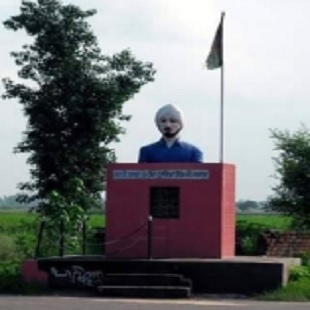
Rulia Singh was a fearless Ghadar Party revolutionary. He was from Sarabha village in the district of Ludhiana. His father’s name was Jagat Singh. He immigrated to the United States at the turn of the twentieth century. He found work in Astoria, Oregon, in the United States, where many Punjabis worked on farms. During the holidays, Kartar Singh, his village mate and one of the most important leaders of the Ghadar Party, who was then a student at the University of California, Berkeley, would come to meet Rulia Singh. He assisted Kartar Singh in obtaining part-time work in order to pay his university fee. Meetings with Kartar Singh, readings from the Ghadr, and speeches by leaders of the Indian revolutionary movement all had an impact on him. He also faced discrimination and humiliation from native Americans because he came from a slave country. Following the outbreak of World War I, Indians in America were exhorted to return to their homeland and join the Ghadar Party in an armed revolution against the British. Rulia Singh, now 36, was among those who responded to the call. On February 21, 1915, the Ghadar Party planned an uprising in India. The plan was discovered by British authorities, who arrested a large number of ghadarites. Rulia Singh was also arrested and tried in the first Lahore conspiracy case under sections 121, 121A, and 396 of the Indian Penal Code. He was sentenced to death, but his sentence was later commuted to life imprisonment. Rulia Singh was transferred to the Andamans Cellular Jail, where he was subjected to violence, deprived of food, and forced to wear handcuffs and bar fetters. He contracted tuberculosis, which proved fatal, and this valiant son of the Indian motherland died at the altar of freedom
Read More About Rulia Singh / Source
Hemchandra Kanungo
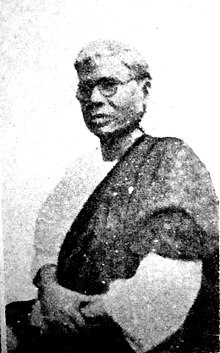
Hemchandra Das Kanungo (4 August 1871 – 8 April 1951) was an Indian nationalist and a member of the Anushilan Samiti. Kanungo travelled to Paris in 1907, where he learnt the technique of assembling picric acid bombs from exiled Russian revolutionaries. Kanungo’s knowledge was disseminated throughout Indian nationalist organisations in the Raj and abroad. In 1908, Kanungo was one of the principal co-accused with Aurobindo Ghosh in the Alipore Bomb Case (1908–09). He was sentenced to transportation for life in the Andamans, but was released in 1921.He was probably the first revolutionary from India who went abroad to obtain military and political training. He obtained training from the Russian emigre in Paris. He returned to India in January 1908. He opened a secret bomb factory “Anushilon Samiti” at Maniktala near Kolkata, founder members of which were Hemchandra Kanungo, Aurobindo Ghosh (Sri Aurobindo) and his brother, Barindra Kumar Ghosh. He was one of the creators of the Calcutta flag, based on which the first flag of independent India was raised by Bhikaiji Cama on 22 August 1907 at the International Socialist Conference in Stuttgart, Germany.
Read More About Hemchandra Kanungo / Source
Bhim Nayek
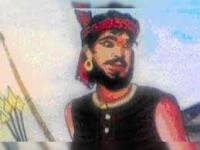
Bhima Nayak or Bheema Nayak (death 29 December 1876) was an Indian revolutionary. He fought against the British in the Indian Rebellion of 1857. When Bhima was convicted by the British government, he was kept in Port Blair and Nicobar.
Read More About Bhim Nayek / Source
Sirajuddin
Sirajuddin was a resident of Nimar (sometimes spelled as Nimad) of Malwa region under the Central India Agency (now Madhya Pradesh). During the First War of Independence in 1857, Nimar’s tribal and non-tribal warriors and other revolutionaries fought against the British inspired by Mangal Pandey, Bheema Nayak and other regional leaders. Besides looting the treasury, the revolutionaries valiantly fought against the British. The Bhils, who were never very happy with the usurpation of their lands by the British, rose in revolt in what has come to be known as The Great Bhil Rebellion of 1857-60. After Tantya Tope’s arrival in Nimad in 1857, several Holkar employees and citizens joined the revolt against the British. Sirajuddin joined the anti-British rebel forces during the Uprising of 1857. He played an active role in fighting against the British troops at Mandleshwar (sometimes spelled as Mandaleshwar). The British made several attempts to crush the rebels but in vain but soon the British summoned up forces from other areas in addition to the local Corps and used a combination of force to subdue this rebellion. They were successful in the arrest of many of the revolutionaries addressed to be dangerous by them. Sirajuddin and his associates were also captured. Sirajuddin was convicted as a rebel against the British and sentenced to transportation for life across the sea. He was deported to Andaman Islands where he died in detention.
Read More About Sirajuddin / Source
Bhai Parmanand
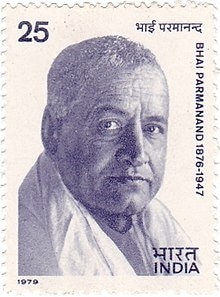
Bhai Parmanand (4 November 1876 – 8 December 1947) was an Indian nationalist and a prominent leader of the Hindu Mahasabha.
Read More About Bhai Parmanand / Source
Abhoy Pada Mukherjee
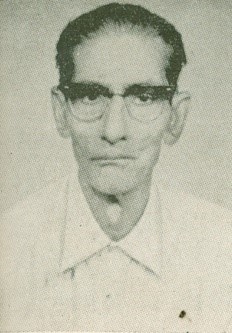
Abhoy Pada Mukherjee was born in 1907 at Boalia, Ghoramara, Rajshahi Town (now in Bangladesh). His father’s name was Ramapada Mukherjee. He was a member of the secret society Anushilan Samity. Prior to his arrest, he remained underground for about two years. Finally, Abhoy Pada was arrested and convicted under Arms Act for seven years. He was deported to the Andamans. He participated in both hunger strikes, in May 1933 for 45 days and in July 1937 for 37 days. He was repatriated and released in 1939. The total jail period was 7 years.
Read More About Abhoy Pada Mukherjee / Source
Bahadur Goonburah
Bahadur Gaon Burah belonged to Assam and was born in 1819. His family held the royal position of ‘Akhorkota Barua’ entrusted with the responsibility of writing on the copper plate inscriptions recording land grants made to the Adhikaras or Satradhikars (Head priests) of Auniati, Kamalabari, Dakhinpat, and other Satras. Bahadur was one of the main revolutionary leaders of the First War of Independence in Assam who, along with Maniram Dewan, had participated in the 1857 revolt against the British. Earlier, before joining the war of independence, the British had appointed him the village headman of Jorhat and Titabor and he was popularly known as Bahadur for his courage. Bahadur, whose real name was Bahadil, was a close aide of Maniram Dewan Baruah and Piyali Baruah. Dewan was a confidante and counselor to the Ahom King Purundar Singha. He was the first Indian to set up a tea garden at Chenimore in Jorhat. The Britishers deposed Purandar Singha and took control of the administration. When the uprising of 1857 broke out, Maniram viewed it as an excellent opportunity to restore Ahom rule in Assam. He and a few other freedom fighters together planned an anti-colonial agitation. He mobilized the Ahom rulers and the Assam Light Infantry sepoys for this uprising. The plot was discovered by the British before it could begin. During the First War of Indian Independence, Bahadur was entrusted by Dewan with the task of mobilizing support among the Khilonjia Muslim community. He was also involved in arranging arms and ammunition to carry out an armed revolt in Assam along with the disgruntled soldiers of Bihar and Uttar Pradesh in the British army. Dewan along with Piyoli Baruah was arrested and they were publicly executed by hanging at Jorhat jail on 26 February 1858. Bahadur was put on trial for treason along with Dewan and others by the British in Jorhat in 1858 and was sentenced to life imprisonment in Andaman and Nicobar Islands. Bahadur along with his associates Dutiram Barua, Farmud Ali, Binoy Laskar, and Gopen Roy was among the initial batch of two hundred-odd rebels who were deported to the islands in a ship named ‘Bernaje’ (1859). He died at his son’s residence in Daflating near Titabor in 1891 after returning from Kalapani (Andaman Islands) following the commutation of his sentence. He was buried at New Balibat in Jorhat. The people of Titabor built a memorial with a museum in memory of Bahadur Gaon Burah.
Read More About Bahadur Goonburah / Source
Bishan Singh

Bishan Singh, a prominent ghadarite, was from Amritsar’s Dadehar village. His father’s name was Jawala Singh. He was an active member of the Ghadar Party in the Philippines and one of its most generous financial supporters. He returned from Manila aboard the Komagata Maru ship. He was a close associate of Wasakha Singh, another important Ghadar Party leader. In the early months of 1915, he was involved in revolutionary activities in Punjab. On 19 February 1915, he arrived at Mian Mir Cantonment to join the uprising, but the British got the whiff of their plans and disarmed all sympathetic battalions. As a result, the Ghadar Party’s plan failed. Bishan Singh was arrested and in the first Lahore Conspiracy Case, he was tried under sections 121, 121 A, and 122 of the Indian Penal Code. Judges handed down their verdict on September 13, 1915. He was sentenced to death and forfeiture of property, but Viceroy Hardinge later commuted his sentence to life imprisonment in the Andaman and Nicobar Islands’ Cellular Jail. When the British government declared Royal Amnesty in 1920, he was released. Following his release, he became involved in the Akali movement. Later on, he worked as a Sewadar in the Golden Temple.
Read More About Bishan Singh / Source
Nidhan Singh
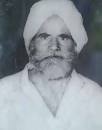
Nidhan Singh, son of Sunder Singh was a resident of Ferozepur in Punjab. He was arrested in First Lahore Conspiracy Case. Initially, a Death sentence was awarded to him which was later commuted to transportation for life. Nidhan Singh was one of the 45 accused who was sentenced for transportation for life and the greater number of the accused had been concerned were the gatherings at Jhar Sahib in the Amritsar District in November 1914, those at Gujrawal and Lohatbadi in the Ludhiana District and Nabha state in January and February 1915, the abortive raid on the Ferozepore cantonment in February 1915, and that on the Kapurthala State magazine in June 1915. Nidhan Singh was one of those 98 accused to be charged under sections 121 (Waging war), 121-A (Conspired to wage war), 122, 124-A, 131, and 395 of the Indian Penal Code. The judgment by the Special Tribunal by the Order of Lieutenant Governor of Punjab on the complaint of H. V. B. Hare-Scott, Superintendant of Police, CID, was given in 1916 in the effect of which he was transported to the Andaman Islands. In this judgment, it was mentioned that “the result of the trial will be to give a further blow to the Sikh revolutionary movement in Punjab, which for the time being is dormant, if not quite dead”.
Read More About Nidhan Singh / Source
Sachindra Nath Sanyal
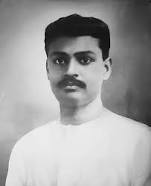
Sachindra Nath Sanyal pronunciation (3 April 1890 — 7 February 1942) was an Indian revolutionary and co-founder of the Hindustan Republican Army (HRA, which after 1928 became the Hindustan Socialist Republican Association) that was created to carry out armed resistance against the British Empire in India. He was a mentor for revolutionaries like Chandra Shekhar Azad, Jatindra Nath Das, and Bhagat Singh.
Read More About Sachindra Nath Sanyal / Source
Sachindra Nath Dutta
Sachindra Nath Dutta alias Sachindra Dutta alias Hemchandra Sarkar was a resident of undivided Bengal. He was an active revolutionary of the Shibpur Action case of 1915. In the midnight of 29 September 1915, a raid was made at the house of Krista Behari Biswas, a wealthy resident of Shibpur and a favorite of British also known to be a ‘Guptachar’ (British Spy) in the village, situated in the district of Krishnagar by 22 Bhadralok class Bengali freedom fighters. The revolutionaries arrived by a steamer crossing the river Kharia (also known as Jelingi). They took with them some cash and gold ornaments for their revolutionary activities. The First Information report was lodged at Betuadhari. The path of escape through the jungle took them in a northerly direction towards Beruadhari. A Sub-Inspector of Nakasipara Thana accompanied by a constable tried to intercept with fire-shots but failed to stop the revolutionaries who crossed the river in two batches. On basis of the evidences, statements of the witnesses especially of the property owners Krista Behari and Jagabandhu Biswas, Sachindra Nath Dutta and other accused were charged and tried in the court of the Special Tribunal for the Trial of the Shibpur Dacoity Case in Krishnanagar under Section 395 and 396 of Indian Penal Code. During the proceedings, Narendra Nath Sarkar became a witness for the Crown and pardon was rendered by the court under section 337. Sachindra Nath Dutta was sentenced to transportation for life on 15 February 1916 in connection with the Shibpur Action case. He was deported to Cellular Jail in Andaman Islands in 1916, where he was allotted Prisoner No. 38735. He was repatriated in 1921.
Read More About Sachindra Nath Dutta / Source
Dhanwantri
Comrade Dhanwantri (7 March 1902 – 13 July 1953) was a freedom fighter and one of the founder of Communist Party of India in Jammu and Kashmir. During the British Raj, he was arrested by the British authorities and jailed for an overall period of 17 years out of his total adult life of 34 years.The Communist Party of India Jammu and Kashmir State headquarters, Dhanwantri Bhavan, is named in his honor.
Read More About Dhanwantri / Source
Dudhnath Tiwari
Dudhnath Tiwari (or Tewari also spelled Doodnath Tewarry in British Indian records) (fl. 1857–1866) was an Indian convict (number 276) from the Sepoy mutiny who was sent to the penal settlement in the Andamans and became famous for escaping and living with the Andamanese tribes for about a year. Accounts of life among the tribals, though coloured by his own prejudices and by possible embellishments, became famous in his time. During the time that he spent among the tribes, he came to learn of a tribal uprising being planned against the British at the penal settlement at which point he chose to return to the penal settlement and reveal the plans. The British penal settlement officers then prepared themselves for what was known as the Battle of Aberdeen in which the tribals were defeated. For his actions Tiwari was pardoned.
Tiwari was a sepoy of the 14th regiment of native infantry and had been sentenced for mutiny and desertion during the 1857 rebellion. He was sent to the penal settlement at Port Blair on the 8th of April 1858 but he, along with 90 others, escaped from the Ross Island Penal Colony on the 23rd. The escapees made rafts with felled trees, tied with tent ropes. A fellow prisoner Aga had claimed that the shore opposite was 10 days of walking from the capital of Burma. All earlier prisoners who had attempted an escape had either returned to the penal settlement after being lost in the jungle for days without food or had been killed by the tribals. Tiwari was the sole survivor of this escape attempt and he submitted a report of his travels to Dr J.P. Walker, the superintendent. In his statements which were reprinted widely he recounted his escape and life among the tribals. He claimed that the escape party had met up with another bunch of escapees from Phoenix Bay and Chatham Island and together, nearly 130 convicts, walked through the jungle for eight days without food. They then found some fruits to eat and obtained water from some freshwater springs and by cutting certain creeping canes. Twelve members were left to die of hunger and thirst. They never came across any natives, but came across abandoned dwellings. On the fourteenth day they were surrounded at noon by a party of 100 aborigines armed with bows and arrows. Attempts to signal surrender failed and a large number of convicts were killed. Tiwari escaped with arrow wounds on the eyebrow, elbow, and shoulder along with Shoo Dull and another convict (identified only as belonging to the Kurmi caste) and reached a tidal creek and spent the night there. The next day they were detected by another party of tribals who shot at them, killing the two and leaving Tiwari wounded and feigning dead. He was dragged out and shot at again, he feigned dead and then attempted to remove the arrows. The tribals then took him in their boat and applied soil to his wounds. They then took him to another island called Turmooglee. His wounds healed and he adopted the tribal customs, living naked with a shaved head. The tribals looked upon him with suspicion and never let him use a bow and arrow. They never made him work and after about four months, Pooteah, an elder assigned his daughter Leepa, of twenty, and another girl of sixteen called Jigah, daughter of Heera, as wives. Tiwari described his views on the lives of the tribes. He claimed that the aboriginals had no idea of a God and he had five wives in all with very little ceremony. Babies were reared and suckled by any nursing mothers in the tribe. After spending a year and 24 days, he returned to the convict settlement to warn them of the impending attack. F.J. Mouat considered Tewari’s account as exaggerated and compared him with Munchausen. Edward Horace Man also considered some of Tiwari’s accounts to have been concocted.Maurice Vidal Portman identified the tribe that Tiwari lived with as the Aka-Bea-da. Tiwari was subsequently pardoned and released. The Government order read:
In consideration of the behaviour of Life Convict Dudhnath Tewari, who, after being with the aborigines of the Andaman Islands for upwards of a year, returned to give warning of an attack which they had planned to make upon the station at Aberdeen, at Atalanta Point, the Governor General in Council is pleased to comply with your recommendation in his favour, and to grant him a free pardon. He should be released and sent up to Calcutta by the first opportunity.
In 1866, Tiwari was taken to Port Blair by Jeremiah Homfray who headed the Andaman Home which had been founded by Rev. Henry Fisher Corbyn to “civilize” the Andamanese. Several inmates at the Andaman Home were able to recognize Tiwari. The women abused and berated Tiwari for having abandoned his pregnant wife Leepa.
Read More About Dudhnath Tiwari / Source
Seikh Formud Ali
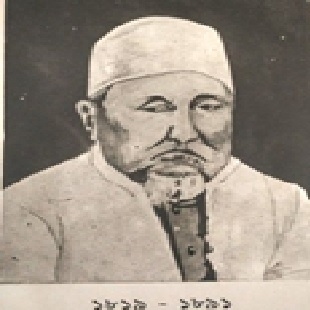
Sheikh Formud Ali belonged to Assam. He was one of the main revolutionary leaders of the First War of Independence in Assam who, along with Maniram Dewan, had participated in the 1857 revolt against the British. Earlier, before joining the war of independence, the British had appointed him the village headman of Jorhat and Titabor and he was popularly known as Bahadur for his courage. Bahadur, whose real name was Bahadil, was a close aide of Maniram Dewan Baruah and Piyali Baruah. Dewan was a confidante and counselor to the Ahom King Purundar Singha. He was the first Indian to set up a tea garden at Chenimore in Jorhat. The Britishers deposed Purandar Singha and took control of the administration. When the uprising of 1857 broke out, Maniram viewed it as an excellent opportunity to restore Ahom rule in Assam. He and a few other freedom fighters together planned an anti-colonial agitation. He mobilized the Ahom rulers and the Assam Light Infantry sepoys for this uprising. The plot was discovered by the British before it could begin. During the First War of Indian Independence, Bahadur was entrusted by Dewan with the task of mobilizing support among the Khilonjia Muslim community. He was also involved in arranging arms and ammunition to carry out an armed revolt in Assam along with the disgruntled soldiers of Bihar and Uttar Pradesh in the British army. Dewan along with Piyoli Baruah was arrested and they were publicly executed by hanging at Jorhat jail on 26 February 1858. Bahadur was put on trial for treason along with Dewan and others by the British in Jorhat in 1858 and was sentenced to life imprisonment in Andaman and Nicobar Islands. Bahadur along with his associates Dutiram Barua, Farmud Ali, Binoy Laskar, and Gopen Roy was in the same batch of rebels who were deported to the islands in a ship. He died at his son’s residence in Daflating near Titabor in 1891 after returning from Kalapani (Andaman Islands) following the commutation of his sentence. He was buried at New Balibat in Jorhat. The people of Titabor built a memorial with a museum in memory of Bahadur Gaon Burah.
Read More About Seikh Formud Ali / Source
Venkat Roa
Venkat Rao was a resident of Raipur of Madhya Pradesh. He was the Landlord of Arpally. Subjected to harsh over-assessment and consequently to economic distress, the peasants were intensely aggrieved with the Government and poised for standing up against it. The time of their unrest reached a flash-point in 1857, an ignition provided by the British-Indian army’s mutinous sepoys – many of whom came from among them. The great revolt of 1857-58 proved to be the turning point in the history of the landlords and feudal elements in India, both for their stakes in the current situation as well as for their progress in the future. The existing situation offered the opportunity to take on their tormentor – the Company raj – frontally in conjunction with an aroused rural society. Venkat Rao took an active part in the First War of Independence in 1857 against the British. He organized armed forces involving Gonds, Marias, and Rohillas and joined his forces with the Rajput rebels under Hanuman Singh. They jointly carried out attacks against the British positions. Hanuman Singh was a Magazine Lashkar in the British Army. He assassinated Major Cidwel at his residence on 18 January 1858. Subsequently, Hanuman Singh was arrested by the British and tried. He was convicted and sentenced to death; hanged in Raipur on 22 January 1858. Venkat Rao after the capture of one of his associates Babu Rao escaped to Bastar. As a result of the betrayal by the Raja of Bastar leaking information about his hideout, he was captured by the British in 1860. He was trialed and awarded life imprisonment and transported for life to the Andaman Islands. He died in Andaman.
Read More About Venkat Roa / Source
Harekrisna Konar

Hare Krishna Konar (Bengali: হরেকৃষ্ণ কোঙার, romanized: Harēkr̥ṣṇa kōṅāra, (listen); 5 August 1915 – 23 July 1974) was an Indian Marxist revolutionary, radical activist and Communist politician. Konar was a founding member of Communist Party of India (Marxist), and the leader to start the first land reforms and agrarian reforms in India as well as the chief architect of the West Bengal land and property distribution. In the 1930s for making arms and bombs for the Jugantar group, he was deported to the Cellular Jail for 6 years at the age of 18 and there he took part in the first hunger strike and in 1935 he founded the Communist Consolidation and led the historical second hunger strike. Konar was the mentor of freedom fighters like Batukeshwar Dutt, Shiv Verma, Sachindra Nath Sanyal, Ganesh Ghosh, etc.
Read More About Harekrisna Konar / Source
Prabir Kumar Goswami
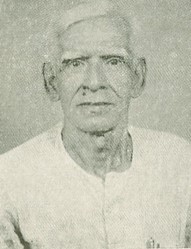
Prabir Kumar Goswami was born in Mymensing (Now in Bangladesh). He was arrested and convicted under Arms Act to a long-term prison sentence on 12 November 1932. He was deported to the Andamans. He took part in the hunger strike in Cellular Jail in May 1933 for 45 days and in July 1937 for 37 days. He fell victim to the brutal punishment of flogging in the Cellular Jail. He is no more in the living.
Read More About Prabir Kumar Goswami / Source
Sushil Dasgupta
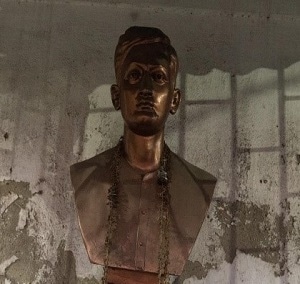
Sushil Kumar Dasgupta was born in Barisal, Undivided India, on 10 July 1906. During the course of the Indian Freedom Struggle, he was a member of the Yugantar revolutionary party and was caught in the Putia train robbery case. Sushil Kumar was imprisoned in the Medinipur Jail in the year 1929. He fled from the prison along with other revolutionaries – Sachin Kar Gupta and Dinesh Majumder. They were caught by the colonial police authority. Dinesh Majumder was hanged until death.
Sachin Kar Gupta was first sent to the Mandalay Jail, thereafter to the Cellular Jail. Against the brutal torture being faced in the prison cells, the prisoner inmates had gone on a hunger strike. Leaders of the freedom struggle, including Mahatma Gandhi, Rabindranath Tagore, and many others, wrote letters to the British regime against this torture. Eventually, all the prisoners of the cellular jail were brought back to the mainland between September 1937 and January 1938. Andaman’s cursed cellular prison was closed down.
Read More About Sushil Dasgupta / Source
Sohan Singh

Sohan Singh Bhakna was born at the beginning of January 1870 at his maternal home in the village Khutrae Khurd, near Guru Ka Bagh, in Amritsar. The suffix – Bhakna, with his name, does not denote his surname, but an identity, along with others, appropriate to his village. However, in the later years of his life, an honorific, Baba (used particularly in Punjab for a respectable aged person) was attached to his name. Now, he is being respectfully remembered as Baba Sohan Singh Bhakna by people all over the world. Like him, most of the Ghadarites instantly got the epithet of Ghadri Babey because after they were released from the jails by the colonial authorities, they were all aged persons with grey hair. In 1909, he migrated to the United States of America in search of greener pastures. Here, he suffered racial discrimination and humiliation from the native white citizens. He along with other Indian immigrants founded the Ghadar Party with the aim of liberating India from the clutches of British rule. He invited Lala Har Dayal to take the responsibility of editing the party’s mouthpiece Ghadar. With the outbreak of WWI, he along with several Ghadar Party members returned to India. On board, at Calcutta, he was arrested. He was tried in the first Lahore Conspiracy Case. Judges awarded him a death sentence but later Lord Hardinge, the then Viceroy, commuted his death sentence to life imprisonment. After suffering a lot in Andaman and Nicobar Islands’ Cellular and other jails, he was released in 1930. He took part in Left and peasant movements against the British. He became a respected leader of the people. After independence, he lived in his home at Bhakna. On 20 December, he left for his heavenly abode after a short illness.
Read More About Sohan Singh / Source
Govind Ram

Govind Ram was a resident of Lahore, Punjab (now in Pakistan). He was actively associated with the revolutionaries of the 1908 and 1909 sedition being associated with many newspapers such as Inquilab and Swarajya. He was also a member of the Shanti Sabha.
The Indian sedition law, enshrined in Section 124A of the Indian Penal Code, was introduced by the British government in 1870 specifically to deal with revolution and dissent against colonial rule. While initially used against violent revolutionaries like Sarvarkar, the sedition law was gradually used in colonial India to target non-violent writers and nationalist leaders like Tilak and Gandhi. This shift was made in response to the greater threat posed by these leaders spreading anti-British sentiments among the Indians. Sedition in colonial India became synonymous with nationalism. The sedition law was criticized by nationalist leaders in India and used to challenge the legitimacy of colonial rule that criminalized free speech.
On 30 April 1908, two Bengali youths, Prafulla Chaki and Khudiram Bose threw a bomb on a carriage at Muzzafarpur, to kill the Chief Presidency Magistrate Douglas Kingsford of Calcutta fame, but erroneously killed two women traveling in it. While Chaki committed suicide when caught, Bose was hanged. Tilak, in his paper Kesari, defended the revolutionaries and called for immediate Swaraj or self-rule. The Government swiftly charged him with sedition. Tilak was arrested for sedition under Section 124A of the Indian Penal Code, 1870, on July 3, 1908, and his second sedition trial commenced and culminated in his incarceration in the Mandalay Prison in Burma (now Myanmar) till 1914. In this chain of arrest, Govind Ram too was arrested and was subsequently convicted of revolutionary activities. Further after trial, he was deported to Andamans Islands.
Read More About Govind Ram / Source
Ladha Ram
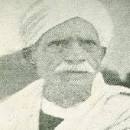
Ladha Ram Kapur was from Varaichanwala district in Gujarat. He preferred to join the revolutionary struggle to a life of comfort. Like his predecessors-in-office, he too was arrested and prosecuted on 22nd March 1910 for writing three ‘offending’ articles and was sentenced to expatriation for ten years for each one of the three offences. He was deported to Kala Pani.
Read More About Ladha Ram / Source
Barindra Kumar Ghosh
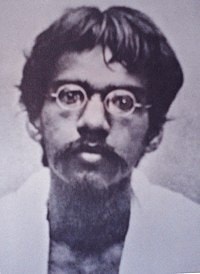
Barindra Kumar Ghosh or Barindra Ghosh, or, popularly, Barin Ghosh (5 January 1880 – 18 April 1959) was an Indian revolutionary and journalist. He was one of the founding members of Jugantar Bengali weekly, a revolutionary outfit in Bengal. Barindra Ghosh was a younger brother of Sri Aurobindo.
Read More About Barindra Kumar Ghosh / Source
Bhupendra Nath Ghosh
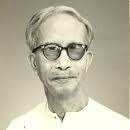
Bhupendra Nath Ghosh was a resident of undivided Bengal. He was an active revolutionary of the Shibpur Action case of 1915. In the midnight of 29 September 1915, a raid was made at the house of Krista Behari Biswas, a wealthy resident of Shibpur and a favourite of British also known to be a ‘Guptachar’ (British Spy) in the village, situated in the district of Krishnagar by 22 Bhadralok class Bengali freedom fighters. The revolutionaries arrived by a steamer crossing the river Kharia (also known as Jelingi). They took with them some cash and gold ornaments for their revolutionary activities. The First Information report was lodged at Betuadhari. The path of escape through the jungle took them in a northerly direction towards Beruadhari. A Sub-Inspector of Nakasipara Thana accompanied by a constable tried to intercept with fire-shots but failed to stop the revolutionaries who crossed the river in two batches. On basis of the evidences, statements of the witnesses especially of the property owners Krista Behari and Jagabandhu Biswas and another man Upendra Chaudhury, who was living in Krishta Behari’s house, and the boatmen namely Rishipada Halder and Kali Majhi, Bhupendra Nath Ghosh and other accused were charged and tried in the court of the Special Tribunal for the Trial of the Shibpur Dacoity Case in Krishnanagar under Section 395 and 396 of Indian Penal Code. During the proceedings, Narendra Nath Sarkar became a witness for the Crown and pardon was rendered by the court under section 337. Bhupendra Nath Ghosh was sentenced to transportation for life on 15 February 1916 in connection with the Shibpur Action case. He was deported to Cellular Jail in Andaman Islands in 1916. He was repatriated in 1921.
Read More About Bhupendra Nath Ghosh / Source
Nikunjabihari Pal
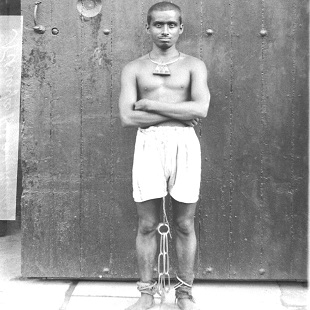
A truly unsung hero, who spent fourteen years of his life in the Cellular Jail, Nikunjabihari Pal(1891-?) was born in Rasulabad, Tripura. Nothing is known about his parentage, early life, and education. He spent most of his life in Pabna-Dhaka-Faridpur tracts.
A close associate of Pulin Behari Das, he was associated with the Dhaka Anushilan Samiti as a front-ranging activist, who took part in several dacoities in Dhaka and its adjoining districts. Hero of the many encounters, Nikunjabehari jumped out of the police cordon on several occasions; the incident of the Atgharia village of Serajganj, Pabna is a case in point. On a definite tip-off (27 May 1918), sub-inspector Haridas Maitra along with a large posse of police force and darogas of adjoining police stations trekked nearly twenty miles to reach the spot and surrounded the targeted house. Leaving most of the force at the front gate, Haridas went to guard the rear. The moment the police pushed the front gate, Nikunjabehari opened the backside gate, shot Haidas Maitra dead and ran to safety.
A couple of months after the incident, he was arrested under Bengal Regulations III of 1818 along with the Arms Act and several other charges and was lodged in the Pabna Jail. The special tribunal sentenced Nikunjabehari to transmigration with rigorous imprisonment for fourteen years
Read More About Nikunjabihari Pal / Source
Trailokyanath Chakravarty
Trailokyanath Chakraborty (2 August 1889 – 9 August 1970) was an Indian independence activist and politician. He led and worked with other renowned freedom fighters and led to freedom of India. He lived for 80 years, out of which he spent 30 years in jail. Some of his years in jail was after Indian independence in Bangladesh, which was under Pakistan control, after partition of India into India and Pakistan. He was born in 1889 at Kapasiatia district Mymensingh in present-day Bangladesh. He joined in freedom struggle as a boy of 7 years old while in school in 1906 and became a leader of the Dhaka Anushilan Samiti. He was first arrested for his revolutionary activities in 1908, as a result of that he could not finish his education. However, he could speak 3-4 of Indian languages apart from English. Many of these languages he learnt in jail from his jail mates. He was one of the chief accused in the Barisal Conspiracy Case of 1913, and was sentenced by the British and transported to the Andamans as a result. After independence in 1947, he became a politician and parliamentary member. He died in 1970 in Delhi, India. In spite of being freedom fighter and spending much of his life in hiding, he had strong influence in family of his brothers, education of grand kids, their marriage decisions. He inspired many girl grandchildren to get higher degrees in education. He never married.
Read More About Trailokyanath Chakravarty / Source
Bonangi Pandu Padal
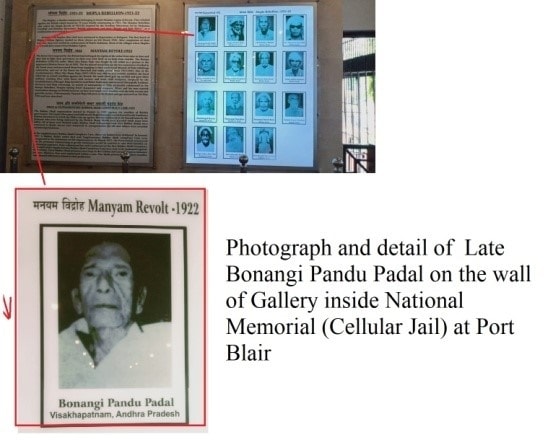
Bonangi Pandu Padal, also called Pandu, was born on 13 August 1890 in Andhra Pradesh. His father’s name was Bonangi Andaiah Padal and mother was B. Bangaramma.
On one of the marble plaques on the central tower of the Cellular Jail (Picture), the names of the freedom fighters from the various states of India have been engraved. Bonangi Pandu Padal’s name is among six freedom fighters from Andhra Pradesh who were incarcerated in the Cellular Jail between 1922 and 1932.
Bonangi Pandu Padal was one of the associates of the valiant and famous freedom fighter, Alluri Seetarama Raju whose name became a household icon for the people of Andhra Pradesh, and a terror to the British, during the freedom struggle. Along with Korrabu Kottayya, Golivili Sanayasayya, Kunchatti Sanyasi, Vegiraju Satyanarayana Raju, and Taggi Veerayya Dora, Bonangi Pandu Padal, joined Alluri Seetaramaraju in his fight against the British in the Manyam Hills of the Agency areas of Andhra.
Read More About Bonangi Pandu Padal / Source
Mahavir Singh (revolutionary)
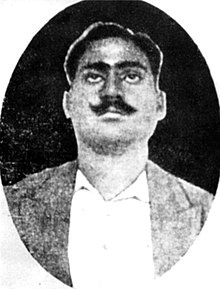
Mahavir Singh Rathore (16 September 1904 — 17 May 1933) was an Indian revolutionary and independence fighter in the 1930s. Singh was a member of Naujawan Bharat Sabha. He helped in the escape of Bhagat Singh, Batukeshwar Dutt and Durgawati Devi from Mozang House in Lahore. He was arrested as part of the Second Lahore Conspiracy Case and took part in the hunger strike of 1933 to protest the treatment of prisoners along with Mohit Moitra (convicted in Arms Act Case), Mohan Kishore Namadas (also convicted in Arms Act Case). and 30 others. Singh died on 17 May 1933 due to force feeding. Mohit Moitra and Mohan Kishore Namadas also died during the hunger strike. A statue was erected in front of the Cellular Jail in his honor.
Read More About Mahavir Singh (revolutionary) / Source
Shyamdev Narayan
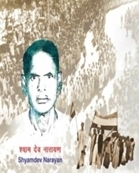
Shyamdev Narayan alias Ram Singh was born on 5 October 1905 in Bhagar village under Siwan police station in Siwan district. In 1931 when the Salt Movement was going on, he used to bring letters to the Congress office. He was arrested on 4th December 1931 from Sadaqat Ashram, Patna. He was caught at Sonepur station with some papers. After his return from jail, he joined a Revolutionary Party. Meanwhile, a plan was made to kill European Officers in Patna and in this connection Shyamdev Narayan was arrested and sentenced to kalapani and on 22 September 1932. Immediately he was deported to Port Blair Jail in Andaman Island.After his release he got himself immersed in freedom struggle. He encouraged people to participate in the “Quit India Movement of 1942 and was arrested several times between 1942 and 1945. He died on 6th July 2000.
Read More About Shyamdev Narayan / Source
Bahadur Singh
Bahadur Singh hailed from Nimar (sometimes spelled as Nimad) of Malwa region under the Central India Agency (now Madhya Pradesh). During the First War of Independence in 1857, Nimar’s tribal and non-tribal warriors and other revolutionaries fought against the British inspired by Mangal Pandey, Bheema Nayak and other regional leaders. Besides looting the treasury, the revolutionaries valiantly fought against the British. The Bhils, who were never very happy with the usurpation of their lands by the British, rose in revolt in what has come to be known as ‘The Great Bhil Rebellion of 1857-60’. After Tantya Tope’s arrival in Nimad in 1857, several Holkar employees and citizens joined the revolt against the British. Bahadur Singh joined the anti-British rebel forces during the Uprising of 1857. He played an active role in fighting against the British troops at Mandleshwar (sometimes spelled as Mandaleshwar). Bahadur Singh and his men were against the oppressive British policies of public health, forest and land revenues. He and his associates tried hard to retain their position in their region but failed against the superior British forces. The British summoned up forces from other areas in addition to the local Corps and used a combination of force to subdue this rebellion. They succeeded in arresting many of the revolutionaries considered dangerous by them. Bahadur Singh and his associates were also captured. Bahadur Singh was convicted as a rebel against the British and sentenced to transportation for life across the sea. He was deported to Andaman Islands where he breathed his last in detention.
Read More About Bahadur Singh / Source
Dutiram Barua
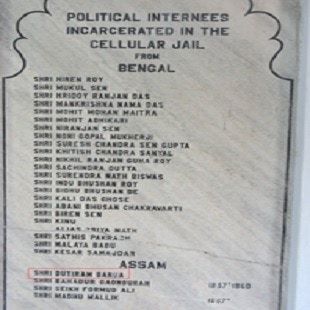
Dutiram Barua belonged to Assam. He was one of the main activists in the First War of Independence in Assam who, along with Maniram Dewan, had participated in the 1857 revolt against the British. Dutiram Barua was an associate of Maniram Dewan Baruah and Piyali Baruah. Dewan was a confidante and counselor to the Ahom King Purundar Singha. He was the first Indian to set up a tea garden at Chenimore in Jorhat. The Britishers deposed Purandar Singha and took control of the administration. When the uprising of 1857 broke out, Maniram viewed it as an excellent opportunity to restore Ahom rule in Assam. He and a few other freedom fighters together planned an anti-colonial agitation. He mobilized the Ahom rulers and the Assam Light Infantry sepoys for this uprising. The plot was discovered by the British before it could begin. Dewan along with Piyoli Baruah was arrested and they were publicly executed by hanging at Jorhat jail on 26 February 1858. Dutiram was put on trial for his anti-British revolt and was sentenced to life imprisonment in Andaman and Nicobar Islands. Dutiram along with his associates Farmud Ali, Binoy Laskar, and Gopen Roy were among the same batch of rebels who were deported to the penal settlement of the Andaman Islands in a ship.
Read More About Dutiram Barua / Source
Himanchal Singh
Himanchal Singh was a resident of Thana Bhavan (‘Thanah Bhowun’ in British record), a small town in Shamli or Shamlee (formerly part of Muzaffarnagar district) in the North-Western Provinces (now Uttar Pradesh). He took active part in the First War of Independence of 1857. He fought against the British on several occasions. In the month of May 1857, local Muslims under the leadership of an Indian Muslim Sufi scholar Imdadullah Muhajir Makki gathered at Thana Bhawan and staged a violent protest against Company Raj. In the uprising not only the Muslims but villagers of other religions also took part. They were inspired from the revolt of Meerut. Later, British forces secretly gathered intelligence and attacked them. Then the famous Battle of Shamli or say Battle of Thana Bhawan took place between the forces of Haji Imdadullah and the British. Himanchal Singh along with Kura Singh and other warriors fought in the defense of Thana Bhawan against the British attack. Unfortunately, Shamli fell to the British and Thana Bhawan was largely destroyed by British forces. Himachal Singh and his associates were caught by the advancing British troops and charged with plundering the Government property and rebellion against the British. Himanchal Singh was sentenced to imprisonment for life in 1858 and deported to Andaman Islands where he took his last breath in captivity.
Read More About Himanchal Singh / Source
Kura Singh
Kura Singh was a resident of Thana Bhavan (‘Thanah Bhowun’ in British record), a small town in Shamli or Shamlee (formerly part of Muzaffarnagar district) in the North-Western Provinces (now Uttar Pradesh). He took an active part in the First War of Independence of 1857. He fought against the British on several occasions. In the month of May 1857, local Muslims under the leadership of an Indian Muslim Sufi scholar Imdadullah Muhajir Makki gathered at Thana Bhawan and staged a violent protest against Company Raj. In the uprising not only the Muslims but villagers of other religions also took part. They were inspired by the revolt of Meerut. Later, British forces secretly gathered intelligence and attacked them. Then the famous Battle of Shamli or say Battle of Thana Bhawan took place between the forces of Haji Imdadullah and the British. Kura Singh along with Himachal Singh and other warriors fought in the defense of Thana Bhavan against the British attack. Unfortunately, Shamli fell to the British, and Thana Bhawan was largely destroyed by British forces. Kura Singh and his associates were caught by the advancing British troops and charged with plundering the Government property and rebellion against the British. Kura Singh was sentenced to imprisonment for life in 1858 and deported to the Andaman Islands where he took his last breath in captivity in 1859.
Read More About Kura Singh / Source
Madhu Mallik
Madhu Mallick or Madhu Malik was one of the main revolutionary leaders of the First War of Independence in Assam and assisted Maniram Dewan in participating in the 1857 revolt against the British. He was a close aide of Maniram Dewan Baruah and Piyali Baruah. Dewan was a confidante and counselor to the Ahom King Purundar Singha. He was the first Indian to set up a tea garden at Chenimore in Jorhat. The Britishers deposed Purandar Singha and took control of the administration. By that time the Revolt of 1857 broke out at Meerut, Delhi, Lucknow, and Kanpur. Maniram thought of the possibility of organizing a similar type of revolt in Assam for overthrowing the British Government. Maniram wanted to take full advantage of the situation. So, he pursued the young prince Kandarpeswar Singha to take up arms against the British. At that time, there were two regiments in Assam, the First Assam Light Infantry stationed at Dibrugarh and the Second Light Infantry stationed at Guwahati. Most of the sepoys of the First Assam Light Infantry stationed at Dibrugarh were from Western Bihar. These sepoys were against British rule. To fight against the British, Maniram Dewan was greatly helped by a Dibrugarh Bengali Sepoy Madhu Mallik, and many others. However, till August 1857, the sepoys of Assam remained passive but restless. It was because the associates of Maniram in Assam were waiting for his signal to mobilize against the foreigners. But before Maniram could come to Assam to take the lead, a few of his secret letters were intercepted by the British government. Dewan and Piyoli Baruah were arrested and publicly executed by hanging at Jorhat jail on 26 February 1858. Madhu Mallik was sentenced to life imprisonment in the Andaman and Nicobar Islands. He along with his associates Bahadur Gaon Burah, Dutiram Barua, Farmud Ali, Binoy Laskar, and Gopen Roy were deported to the islands in a ship.
Read More About Madhu Mallik / Source
Maya Ram
Maya Ram was a resident of Nimar (sometimes spelled as Nimad) of Malwa region under the Central India Agency (now Madhya Pradesh). During the First War of Independence in 1857, Nimar’s tribal and non-tribal warriors and other revolutionaries fought against the British inspired by Mangal Pandey, Bheema Nayak and other regional leaders. Besides looting the treasury, the revolutionaries valiantly fought against the British. The Bhils, who were never very happy with the usurpation of their lands by the British, rose in revolt in what has come to be known as The Great Bhil Rebellion of 1857-60. After Tantya Tope’s arrival in Nimad in 1857, several Holkar employees and citizens joined the revolt against the British. Maya Ram joined the anti-British rebel forces during the Uprising of 1857. He played an active role in fighting against the British troops at Mandleshwar (sometimes spelled as Mandaleshwar). The British made several attempts to crush the rebels but in vain but soon the British summoned up forces from other areas in addition to the local Corps and used a combination of force to subdue this rebellion. They were successful in the arrest of many of the revolutionaries addressed to be dangerous by them. Maya Ram and his associates were also captured. Maya Ram was convicted as a rebel against the British and sentenced to transportation for life across the sea. He was deported to Andaman Islands where he died in detention.
Read More About Maya Ram / Source
Chandra Kanta Bhattacharji
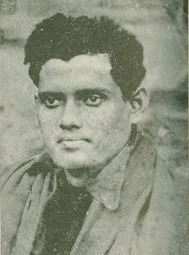
Chandra Kanta Bhattacharya was born at Bidyakut, Tripura. He was a member of the secret society Anushilan Samity. His father’s name was Umesh Chandra Bhattacharya. He was arrested in connection with Ramchandrapur Mail Action. He was sentenced to 8 years prison term. Chandra Kanta was deported to the Andamans. He participated in the second hunger strike in Cellular Jail, Andamans in July 1937 for 37 days. He was repatriated to the mainland in 1937 and released in 1938. The total jail period was seven years.
Read More About Chandra Kanta Bhattacharji / Source
Dwijendra Nath Talapatra
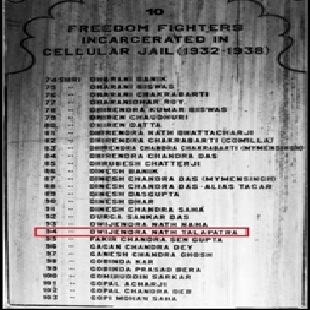
Dwijendra Nath Talpatra, son of Jogesh Chandra Talpatra hailed from Bagmara, Rajshahi. He was a student of Vidyasagar College. He was living in Room No. 58 at 221, Dharmahatta Street. He was actively involved in the Inter-Provincial Conspiracy case of 1936. In September 1932, he went to Birampur taking a large number of Swadhin Bharat leaflets for distribution in the locality. Further owing to his anti-British activities, he was arrested and sentenced on 1 May 1935 and 1 August 1936 to a total of 8 years imprisonment under Section 121 IPC and 52 Prison Act. He was allotted Prison No. 187 in Midnapore Central Jail, later deported to Cellular Jail in the Andaman Islands in August 1936, where he was given Permanent Incarceration No. 382. He was repatriated in 1937.
Read More About Dwijendra Nath Talapatra / Source
Gagan Chandra Dey
Gagan Chandra Dey, son of Shrimanta Ram Dey was inhabitant of Shikarpur under Police Station Hathazari in Chittagong of undivided Bengal (now in Bangladesh). He was an active participant in the Bathua Political Dacoity Case of 1934. In the district of Chittagong and within the jurisdiction of Hathazari Police Station, there is a small village called Bathua. On 24 February 1934, in the village Bathua, in the house of Prasanna Kumar Malakar and Tipurrah Malakar, who were very rich persons and favourite to the British, a dacoity was committed by Gagan Chandra Deyand his group members in order to collect fund for revolutionary activities against the British. In this case Gagan Chandra Dey was accompanied by 1) Priyada Ranjan Chakraborty and 2) Jibendra Kumar Das, 3) Mon Mohan Saha, 4) Nagendra Nath Dey, 5) Harihar Dutta, 6) Nirendra Lal Barua, 7) Mahesh Chandra Barua, 8) Saradindra Bhattacharjya, 9) Mokshada Ranjan Chakraborty, 10) Kiriti Mazumdar, 11) Arvind Dey, 12) Manoranjan Chaudhury and 13) Manindra Chandra De. After their arrest, a test identification parade was held in the jail at Chittagong in which all the accused persons other than Kiriti Mazumdar (injured) had to take part. At the time of his arrest his age was 17 years only. He was sentenced by the Special Tribunal at Chittagong on 27 August 1934 to life imprisonment from the Court of Special Tribunal, Chittagong, under section 395 of Indian Penal Code. Gagan Chandra Dey, Manoranjan Chaudhury, Priyada Ranjan Chakraborty , Jibendra Kumar Das, Saradindra Bhattacharjya, Mahesh Chandra Barua, Nirendra Lal Barua, Mahesh Chandra Barua, Nagendra Nath Dey, Harihar Dutta, Mon Mohan Saha, and other revolutionaries of the case were deported to Cellular Jail in Andaman Islands. Gagan Chandra Dey was given Permanent Incarceration No. 279 in Cellular Jail. He was repatriated in 1937-38.
Read More About Gagan Chandra Dey / Source
Manindra Dey
Manindra Chandra Dey (sometimes spelled as Manen Chandra Dey or Manindra Chandra De), son of Kamini Kumar Dey was inhabitant of Fateabad under Police Station Hathazari in Chittagong of undivided Bengal (now in Bangladesh). He took active part in the Bathua Political Dacoity Case of 1934. In the district of Chittagong and within the jurisdiction of Hathazari Police Station, there is a small village called Bathua. On 24 February 1934, in the village Bathua, in the house of Prasanna Kumar Malakar and Tipurrah Malakar, who were very rich persons and favourite to the British, a dacoity was committed by Manindra Chandra Dey and his group members in order to collect fund for revolutionary activities against the British. Manindra worked in Prasanna’s house for a few months. In this case Manindra Chandra De was accompanied by 1) Priyada Ranjan Chakraborty and 2) Jibendra Kumar Das, 3) Harihar Dutta, 4) Nagendra Nath Dey, 5) Gagan Chandra Dey, 6) Nirendra Lal Barua, 7) Mahesh Chandra Barua, 8) Saradindra Bhattacharjya, 9) Mokshada Ranjan Chakraborty, 10) Mon Mohan Saha, 11) Arvind Dey, 12) Manoranjan Chaudhury and 13) Kiriti Mazumdar. After their arrest, a test identification parade was held in the jail at Chittagong in which all the accused persons other than Kiriti Mazumdar (injured) had to take part. At the time of his arrest his age was 30 years. He was sentenced by the Special Tribunal at Chittagong on 27 August 1934 to life imprisonment from the Court of Special Tribunal, Chittagong, under section 395 of Indian Penal Code. All the said 14 accused in the case were deported to Cellular Jail in Andaman Islands. Manindra Chandra Dey was repatriated during 1937-38.
Read More About Manindra Dey / Source
Man Mohan Saha
Mon Mohan Saha alias Manmohan Shaha, son of Rai Charan Saha was inhabitant of Fateabad under Police Station Hathazari in Chittagong of undivided Bengal (now in Bangladesh). He was an active participant in the Bathua Political Dacoity Case of 1934. In the district of Chittagong and within the jurisdiction of Hathazari Police Station, there is a small village called Bathua. On 24 February 1934, in the village Bathua, in the house of Prasanna Kumar Malakar and Tipurrah Malakar, who were very rich persons and favourite to the British, a dacoity was committed by Mon Mohan Saha and his group members in order to collect fund for revolutionary activities against the British. In this case Mon Mohan Saha was accompanied by 1) Priyada Ranjan Chakraborty and 2) Jibendra Kumar Das, 3) Harihar Dutta, 4) Nagendra Nath Dey, 5) Gagan Chandra Dey, 6) Nirendra Lal Barua, 7) Mahesh Chandra Barua, 8) Saradindra Bhattacharjya, 9) Mokshada Ranjan Chakraborty, 10) Kiriti Mazumdar, 11) Arvind Dey, 12) Manoranjan Chaudhury and 13) Manindra Chandra De. After their arrest, a test identification parade was held in the jail at Chittagong in which all the accused persons other than Kiriti Mazumdar (injured) had to take part. At the time of his arrest his age was 28 years only. He was sentenced by the Special Tribunal at Chittagong on 27 August 1934 to life imprisonment from the Court of Special Tribunal, Chittagong, under section 395 of Indian Penal Code. He was given Prisoner No. 9437 in Dacca Central Jail. Mon Mohan Saha, Harihar Dutta, Gagan Chandra Dey, Manoranjan Chaudhury, Priyada Ranjan Chakraborty , Jibendra Kumar Das, Saradindra Bhattacharjya, Mahesh Chandra Barua, Nirendra Lal Barua, Mahesh Chandra Barua, Nagendra Nath Dey, and other revolutionaries of the case were deported to Cellular Jail in Andaman Islands. Mon Mohan Saha was given Permanent Incarceration No. 305 in Cellular Jail. He was repatriated during 1937-38.
Read More About Man Mohan Saha / Source
Mokshada Ranjan Chakrabarty
Mokshada Ranjan Chakraborty alias Sibu alias Mokshada son of Durga Charan Chakraborty was an inhabitant of Hathazari in Chittagong of undivided Bengal (now in Bangladesh). He was an active participant in the Bathua Political Dacoity Case of 1934. In the district of Chittagong and within the jurisdiction of Hathazari Police Station, there is a small village called Bathua. On 24 February 1934, in the village Bathua, in the house of Prasanna Kumar Malakar and Tipurrah Malakar, who were very rich persons and favourites to the British, a dacoity was committed by Mokshada Ranjan Chakraborty and his group members in order to collect fund for revolutionary activities against the British. In this case, Mokshada was accompanied by 1) his brother Priyada Ranjan Chakraborty and 2) Jibendra Kumar Das, 3) Mon Mohan Saha, 4) Nagendra Nath Dey, 5) Harihar Dutta, 6) Nirendra Lal Barua, 7) Mahesh Chandra Barua, 8) Saradindra Bhattacharjya, 9) Manoranjan Choudhury, 10) Kiriti Mazumdar, 11) Gagan Chandra De, 12) Arabinda De and 13) Manindra Chandra De. After their arrest, a test identification parade was held in the jail at Chittagong in which all the accused persons other than Kiriti Mazumdar (injured) had to take part. At the time of his arrest, his age was 28 years. He was sentenced by the Special Tribunal at Chittagong on 27 August 1934 to 10 Years imprisonment from the Court of Special Tribunal, Chittagong, under section 395 of the Indian Penal Code. Mokshada Ranjan Chakraborty, Priyada Ranjan Chakraborty, Jibendra Kumar Das, Saradindra Bhattacharjya, Mahesh Chandra Barua, Nirendra Lal Barua, Mahesh Chandra Barua, Nagendra Nath Dey, Manoranjan Chaudhury, Arvind Dey, Harihar Dutta, Mon Mohan Saha, and other revolutionaries of the case were deported to Cellular Jail in Andaman Islands. Mokshada was given Permanent Incarceration No. 284. He was repatriated in 1937-38.
Read More About Mokshada Ranjan Chakrabarty / Source
Batukeshwar Dutta
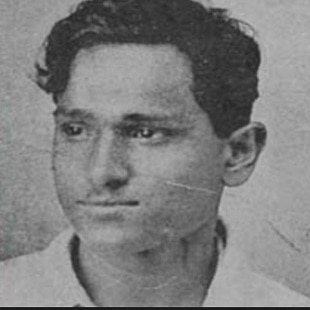
Batukeshwar Dutta, a young freedom fighter, was moved from one prison to another. In the year 1924, Batukeshwar met Bhagat Singh and Chandrashekhar Azad (both members of the revolutionary Hindustan Republican Association [HRA]) and was motivated to join HRA. Both, Batukeshwar Dutta and Bhagat Singh hurled smoke bombs in the Central Legislative Assembly on 8th April 1929 in protest against two bills – the Public Safety Bill and the Trade Dispute Bill.
The slogan InquilabZindabad was raised while hurling the bombs and leaflets titled To make the deaf hear’ were thrown in the Assembly. The brave men decided to surrender so as to inspire other revolutionaries to contribute towards the Indian freedom struggle. They were sentenced to life imprisonment, and the act shook British colonial roots in Indian soil. While Bhagat Singh was hanged for killing John Saunders, Batukeshwar Dutta was transferred to the Cellular Jail, Andaman.
Read More About Batukeshwar Dutta / Source
Sachindra Nandi
Sachindra Mohan Nandi, a soldier who struggled for India’s freedom movement, was born on 1 October 1904, in Tepa village, Rangpur district, East Bengal. His parents’ names were Jatindramohan Nandi and Hemangini Nandi, and his ancestral home was in Pabna town. He received his primary education in Pabna before relocating to Nabadwip, presently known as Nadia. At the Hindu school in Nabadwip, he pursued his education, and in 1920, he earned star marks in four subjects, along with letters, when he passed his matriculation examination from the school. Sachindra was then awarded a monthly scholarship of Rs. 25 and admitted to ISC at Bangavasi College in Calcutta.
Upon Deshbandhu Chittaranjan Das’s invitation, Sachindra Mohan Nandi joined the Swarajya Party in 1921 and served as Deshbandhu’s private secretary for two years. Due to his active involvement in the freedom movement, the British Government terminated his monthly government scholarship of 25 rupees. Consequently, Sachindra returned to Pabna and took the ISC examination in 1922 from Pabna College. He secured the third position in Calcutta University. After that, he enrolled in Presidency College to pursue Honors in Chemistry and passed his B. Sc examination in 1924 with a Duff Scholarship.
Read More About Sachindra Nandi / Source
This list is the best we could find. If you find any errors or have any suggestions, please comment below.
Complete List:
| S.N. | Name | Province |
|---|---|---|
In Connection With First War of Independence, 1857 |
||
| 1 | Alama Fazal Huque | U.P. |
| 2 | Bahadur Goonburah | Assam |
| 3 | Bahadur Singh | M.P. |
| 4 | Bhim Nayek | M.P. |
| 5 | Devi | M.P. |
| 6 | Dutiram Barua | Assam |
| 7 | Dudhnath Tiwari | |
| 8 | Futta | M.P. |
| 9 | Garabdas Patel | Gujrat |
| 10 | Gulab Khan | M.P. |
| 11 | Hatte Singh | Orissa |
| 12 | Himanohal Singh | U.P. |
| 13 | Jawhar Singh | M.P. |
| 14 | Kura Singh | U.P. |
| 15 | Liaqat Ali | U.P. |
| 16 | Loney Singh | U.P. |
| 17 | Madhu Mallik | Assam |
| 18 | Maulvi Syed Aluddin | Hyderabad |
| 19 | Mahibullah | M.P. |
| 20 | Manju Shah | M.P. |
| 21 | Maya Ram | M.P. |
| 22 | Mir Jafar Ali Thanseswari | |
| 23 | Narayan | Bihar |
| 24 | Noora | M.P. |
| 25 | Niranjan Singh | |
| 26 | Qaim Khan | M.P. |
| 27 | Sirajuddin | M.P. |
| 28 | Seikh Formud Ali | Assam |
| 29 | Venkat Roa | M.P. |
FREEDOM FIGHTERS INCARCERATED IN CELLULAR JAIL (1909-1921) |
||
| 30 | Daji Narayan Joshi | Bombay |
| 31 | Ganesh Damodar Savarkar | Bombay |
| 32 | Vinayak Damodar Savarkar | Bombay |
| 33 | Ali Ahmed Siddiqui | Punjab |
| 34 | Amar Singh | Punjab |
| 35 | Bhai Paramanand | Punjab |
| 36 | Bhan Singh | Punjab |
| 37 | Bishen Singh S/o Jawala Singh | Punjab |
| 38 | Bishen Singh S/o Kasur Singh | Punjab |
| 39 | Bishen Singh No. 3 | Punjab |
| 40 | Bishen Singh No. 4 | Punjab |
| 41 | Channan Singh | Punjab |
| 42 | Chattar Singh No. 1 | Punjab |
| 43 | Chattar Singh No. 2 | Punjab |
| 44 | Chet Ram | Punjab |
| 45 | Chuher Singh | Punjab |
| 46 | Gurudas Singh | Punjab |
| 47 | Gurudit Singh | Punjab |
| 48 | Gurumukh Singh No.1 (Also Between 1532-38) | Punjab |
| 49 | Gurumukh Singh No 2 | Punjab |
| 50 | Hardit Singh | Punjab |
| 51 | Harnam Singh | Punjab |
| 52 | Hazara Singh | Punjab |
| 53 | Hidaram | Punjab |
| 54 | Hirda Singh | Punjab |
| 55 | Inder Singh No. 1 | Punjab |
| 56 | Shri Inder Singh No. 2 | Punjab |
| 57 | Jagat Ram | Punjab |
| 58 | Jawand Singh | Punjab |
| 59 | Jawla Singh | Punjab |
| 60 | Jiwan Singh | Punjab |
| 61 | Kala Singh S/o Ghasita Singh | Punjab |
| 62 | Kala Singh S/o Gulag Singh | Punjab |
| 63 | Kapur Singh | Punjab |
| 64 | Kartar Singh | Punjab |
| 65 | Kehr Singh S/o Nehal Singh | Punjab |
| 66 | Kehr Singh S/o Bhan Singh | Punjab |
| 67 | Kesar Singh | Punjab |
| 68 | Kirpa Singh | Punjab |
| 69 | Kirpal. Singh | Punjab |
| 70 | Kusal Singh | Punjab |
| 71 | Lakhan Singh | Punjab |
| 72 | Lal Singh No. 1 | Punjab |
| 73 | Lal Singh No. 2 | Punjab |
| 74 | Madan Singn | Punjab |
| 75 | Mangal Singh | Punjab |
| 76 | Manohar Singh | Punjab |
| 77 | Munsha Singh | Punjab |
| 78 | Nand Singh No. 1 | Punjab |
| 79 | Nand Singh No. 2 | Punjab |
| 80 | Natha Singh | Punjab |
| 81 | Nehar Singh | Punjab |
| 82 | Nidhan Singh | Punjab |
| 83 | Piara Singh | Punjab |
| 84 | Prithwi Singh Azad | Punjab |
| 85 | Raja Ram | Punjab |
| 86 | Eam Raksha Bhale | Punjab |
| 87 | Shri Ram Saran Das | Punjab |
| 88 | Randhir Singh | Punjab |
| 89 | Roda Singh Jatt | Punjab |
| 90 | Rulia Singh | Punjab |
| 91 | Rurh Singh | Punjab |
| 92 | Sajjan Singh | Punjab |
| 93 | Saon Singh | Punjab |
| 94 | Sher Singh | Punjab |
| 95 | Shingara Singh | Punjab |
| 96 | Shiv Singh | Punjab |
| 97 | Sohan Singh | Punjab |
| 98 | Sucha Singh | Punjab |
| 99 | Surain Singh | Punjab |
| 100 | Surjan Singh | Punjab |
| 101 | Teja Singh | Punjab |
| 102 | Thakkar Singh | Punjab |
| 103 | Udhem Singh | Punjab |
| 104 | Wasakha Singh | Punjab |
| 105 | Waswa Singh | Punjab |
| 106 | Shri Govinda Ram | United Province |
| 107 | Hoti Lal | United Province |
| 108 | Ladha Ram | United Province |
| 109 | Mukhada Basu | United Province |
| 110 | Mujtaba Husain | United Province |
| 111 | Nandi Gopal | United Province |
| 112 | Paramanand (Jhanshi) | United Province |
| 113 | Ram Hari | United Province |
| 114 | Roshan Lal | United Province |
| 115 | Sachindra Nath Sanyal Bengal | United Province |
| 116 | Abani Bhusan Chakrabarti | Bengal |
| 117 | Ab1nash Bhattacharji | Bengal |
| 118 | Amr1ta Lal Hazra | Bengal |
| 119 | Ashutosh Lahiri | Bengal |
| 120 | Aswini Kumar Basu | Bengal |
| 121 | Barindra Kumar Gosh | Bengal |
| 122 | Bhupendra Nath Ghosh | Bengal |
| 123 | Bibhuti Bhusan Sarkar | Bengal |
| 124 | Bidhu Bhusan Dey | Bengal |
| 125 | Bidhu Bhusan Sarkar | Bengal |
| 126 | Biren Sen | Bengal |
| 127 | Brojendra Nath Datta | Bengal |
| 128 | Gobinda Chandra Kar | Bengal |
| 129 | Gopindra Lal Roy | Bengal |
| 130 | Harendra Bhattacharjee | Bengal |
| 131 | Hem Chandra Das (Kanungo) | Bengal |
| 132 | Hrish1kesh Kamjilal | Bengal |
| 133 | Indu Bhusan Roy | Bengal |
| 134 | Jatindra Nath Nakdi | Bengal |
| 135 | Jyotish Chandra Paul | Bengal |
| 136 | Kalidas Ghosh | Bengal |
| 137 | Khagendra Nath Chaudhari Alia Suresh Chandra | Bengal |
| 138 | Kinuram Pal Alias Priyanath | Bengal |
| 139 | Kshitish Chandra Sanyal | Bengal |
| 140 | Madan Mohan Bhowmik | Bengal |
| 141 | Nagendra Nath Chanda | Bengal |
| 142 | Nagendra Nath Sarkar | Bengal |
| 143 | Nani Gopal Mukherji | Bengal |
| 144 | Naren Ghosh Chaudhary | Bengal |
| 145 | Nikhil Ranjan Ruha Roy | Bengal |
| 146 | Nikunja Behari Pal | Bengal |
| 147 | Nirapada Roy | Bengal |
| 148 | Phani Bhusan Roy | Bengal |
| 149 | Pulin Behari Das | Bengal |
| 150 | Sachindra Nath Datta | Bengal |
| 151 | Sachindra Lal Mitra | Bengal |
| 152 | Sanukul Chatterji | Bengal |
| 153 | Satish Chanra Chatterji | Bengal |
| 154 | Satya Ranja Basu | Bengal |
| 155 | Sudhir Chandra Dey | Bengal |
| 156 | Sudhir Kumar Sarkar | Bengal |
| 157 | Surendra Nath Biswas | Bengal |
| 158 | Suresh Chandra Sengupta | Bengal |
| 159 | Trailakya Chakrabarti | Bengal |
| 160 | Ullash Kar Datta | Bengal |
| 161 | Upendra Nath Banerji | Bengal |
Moplah Rebels Deported to Andamans (1922 – 1924) |
||
| 162 | Neliiparamban Alavi Haji | |
| 163 | Kolaparamban Kunjalavi | |
| 164 | Kozhisseri Koya Kutty | |
| 165 | Ambattuparamban Saidalippa | |
| 166 | Kayakkatiparambil Kunjeni | |
| 167 | Machingal Rayin | |
| 168 | Kuthukallan Kunjara | |
| 169 | Chungath Athan | |
| 170 | Variyath Valappil Ahammed Kutty | |
| 171 | Mattummal Ahammed Kutty | |
| 172 | Pooyikunnan Marakkar | |
| 173 | Machincheri Alavi | |
| 174 | Pokat Koyami | |
| 175 | Puthampeedikayil Kunjikader Molla | |
| 176 | Mukri Kunjayammu | |
| 177 | Poolakuyyil Kunhi Moideen Kutty | |
| 178 | Poovakundil Alavi | |
| 179 | Neehiyil Kunjeedu | |
| 180 | Aripra Pocker | |
| 181 | Mattummal Marakkar | |
| 182 | Chakkupurakkal Kutty Hasan | |
FREEDOM FIGHTERS INCARCERATED IN CELLULAR JAIL (1922-1932) |
||
| 183 | Lakshmi Kanta Shukla | United Province |
| 184 | Vishnu Saran Dublis | United Province |
| 185 | Shri Kotaya Korribu | Madras |
| 186 | Pandu Padal Bonangi | Madras |
| 187 | Sanyasayya Golivilli | Madras |
| 188 | Sanyasi Kunchatti | Madras |
| 189 | Satyanarayan Raju | Madras |
| 190 | Virayya Dora Taggi | Madras |
FREEDOM FIGHTERS INCARCERATED IN (CELLUALR JAIL 1932-1938) |
||
| 191 | Hazara Singh | Punjab |
| 192 | Khushiram Mehta | Punjab |
| 193 | Dhwanantari | Delhi |
| 194 | Harabandhu Samajdar | Delhi |
| 195 | Bachu Lal | United Province |
| 196 | Batukeshwar Datta | United Province |
| 197 | Bijoy Kumar Sinha | United Province |
| 198 | Gaya Prasad | United Province |
| 199 | Jaydev Kapoor | United Province |
| 200 | Kundan Lal Gupta | United Province |
| 201 | Mahavir Singh | United Province |
| 202 | Prem Prakash | United Province |
| 203 | Ram Singh Dogra | United Province |
| 204 | Shambhu Nath Azad | United Province |
| 205 | Sheo Verma | United Province |
| 206 | Biswanath Mathur | Bihar |
| 207 | Chandrika Singh | Bihar |
| 208 | Gouri Shankar Dubey | Bihar |
| 209 | Jogendra Shukul | Bihar |
| 210 | Kamal Nath Tiwari | Bihar |
| 211 | Khanaiya Lal Mishr | Bihar |
| 212 | Kedarmoni Shukl | Bihar |
| 213 | Kesho Prasad | Bihar |
| 214 | Mhabir Misir | Bihar |
| 215 | Malay Bharamchari | Bihar |
| 216 | Mohit Adhikari | Bihar |
| 217 | Nanku Singh | Bihar |
| 218 | Pramatha Nath Ghosh | Bihar |
| 219 | Ram Pratap Singh | Bihar |
| 220 | Shyam Krishna Agarwal | Bihar |
| 221 | Shyamacharan Bharatwar | Bihar |
| 222 | Shyamdeo Narayan Alias Ram Singh | Bihar |
| 223 | Suraj Nath Chaube | Bihar |
| 224 | Abani Ranjan Ghosh | Bengal |
| 225 | Abani Mukharji | Bengal |
| 226 | Abdul Kedar Chaudhary | Bengal |
| 227 | Abhaypada Mukharji | Bengal |
| 228 | Achuta Ghatak | Bengal |
| 229 | Adhir Ranjan Nag | Bengal |
| 230 | Adhir Chandra Sinha | Bengal |
| 231 | Ajay Sinha | Bengal |
| 232 | Ajit Kumar Mitra | Bengal |
| 233 | Akshay Kumar Chaudhary | Bengal |
| 234 | Amalendu Bagchi | Bengal |
| 235 | Amar Mukharji | Bengal |
| 236 | Amar Sutradhar | Bengal |
| 237 | Amritendu Mukherji | Bengal |
| 238 | Amulya Kumar Mitra | Bengal |
| 239 | Amulya Roy | Bengal |
| 240 | Amulya Chandra Sen Gupta | Bengal |
| 241 | Ananda Prasad Gupta | Bengal |
| 242 | Ananta Bhattachar Ji | Bengal |
| 243 | Ananta Chakrbarti | Bengal |
| 244 | Ananta Kumar Chakrbarti | Bengal |
| 245 | Ananta Dey | Bengal |
| 246 | Ananta Mukharji | Bengal |
| 247 | Ananta Lal Singh | Bengal |
| 248 | Anath Bandhu Saha | Bengal |
| 249 | Anil Mukherji | Bengal |
| 250 | Ananda Charan Pal | Bengal |
| 251 | Anukul Chatterji | Bengal |
| 252 | Arabinda Dey | Bengal |
| 253 | Atul Chandra Datta | Bengal |
| 254 | Bangeswar Roy | Bengal |
| 255 | Bankim Chakrbarti | Bengal |
| 256 | Birendra Kumar Ghosh | Bengal |
| 257 | Benoy Kumar Basu | Bengal |
| 258 | Benoy Bhusan Roy | Bengal |
| 259 | Benoy Tarafdar | Bengal |
| 260 | Bhaba Ranjan Patutundu | Bengal |
| 261 | Bhabatosh Karamakar | Bengal |
| 262 | Bhabesh Talukdar | Bengal |
| 263 | Bhagwan Chandra Biswas | Bengal |
| 264 | Bharat Sharma Roy | Bengal |
| 265 | Bholanath Roy | Bengal |
| 266 | Bhuban Mohan Chandra | Bengal |
| 267 | Bhupal Chandra Basu | Bengal |
| 268 | Bhupalchandra Panda | Bengal |
| 269 | Bhupendra Chandra Bhattachar Ji | Bengal |
| 270 | Bhupesh Chandra Banerji | Bengal |
| 271 | Bhupesh Chandra Guha | Bengal |
| 272 | Bhupesh Chandra Saha | Bengal |
| 273 | Bibhuti Bhusan Banerji | Bengal |
| 274 | Bidhu Bhusan Guha Biswas | Bengal |
| 275 | Bidhu Bhusan Sen | Bengal |
| 276 | Bidyadhar Saha | Bengal |
| 277 | Bijan Kumar Sen | Bengal |
| 278 | Bijay Kumar Ghosh | Bengal |
| 279 | Bijoy Krishna Banerji | Bengal |
| 280 | Bimal Chandra Bhatttacharji | Bengal |
| 281 | Bimal Bhomik | Bengal |
| 282 | Bimal Das Gupta | Bengal |
| 283 | Bimal Kumar Sarkar | Bengal |
| 284 | Bimalendu Chakrbartibi | Bengal |
| 285 | Biraj Deb | Bengal |
| 286 | Biren Chaudhary | Bengal |
| 287 | Birendra Chandra Lahiri | Bengal |
| 288 | Biren Roy | Bengal |
| 289 | Biru Bhusan Chakrabarti | Bengal |
| 290 | Chndra Kanta Bhatttacharji | Bengal |
| 291 | Chitta Biswas | Bengal |
| 292 | Chittranjan Datta | Bengal |
| 293 | Chintaharan Das | Bengal |
| 294 | Chunilal Das | Bengal |
| 295 | Deb Kumar Das | Bengal |
| 296 | Debendra Talukdar | Bengal |
| 297 | Dharani Banik | Bengal |
| 298 | Dharani Biswas | Bengal |
| 299 | Dharani Chakrabarti | Bengal |
| 300 | Dharanidhar Roy | Bengal |
| 301 | Dhirendra Kumar Biswas | Bengal |
| 302 | Dhiren Chaudhary | Bengal |
| 303 | Dhiren Datta | Bengal |
| 304 | Dhirendra Nath Bhatttacharji | Bengal |
| 305 | Dhirendra Chakrabarti | Bengal |
| 306 | Dhirendra Chandra Chakrbarti | Bengal |
| 307 | Dhirendra Chandra Das | Bengal |
| 308 | Dhrubesh Chatterji | Bengal |
| 309 | Dinesh Banik | Bengal |
| 310 | Dinesh Chandra Das | Bengal |
| 311 | Dinesh Chandra Das – Alias Tagar | Bengal |
| 312 | Dinesh Das Gupta | Bengal |
| 313 | Dinesh Dhar | Bengal |
| 314 | Dinesh Chandra Saha | Bengal |
| 315 | Durga Sankar Das | Bengal |
| 316 | Dwijendra Nath Naha | Bengal |
| 317 | Dwijendra Nath Talapatra | Bengal |
| 318 | Fakir Chandra Sen Gupta | Bengal |
| 319 | Gagan Chandra Dey | Bengal |
| 320 | Ganesh Chandra Ghosh | Bengal |
| 321 | Gobinda Kar | Bengal |
| 322 | Gobinda Prasad Bera | Bengal |
| 323 | Gomiruddin Sarkar | Bengal |
| 324 | Gopal Acharji | Bengal |
| 325 | Gopal Chandra Deb | Bengal |
| 326 | Gopi Mohan Saha | Bengal |
| 327 | Gour Gopal Datta | Bengal |
| 328 | Haran Chandra Khangar | Bengal |
| 329 | Harekrishna Konar | Bengal |
| 330 | Harendra Nath Das | Bengal |
| 331 | Haribal Chakrabarti | Bengal |
| 332 | Haridas Saha | Bengal |
| 333 | Harihar Datta | Bengal |
| 334 | Haripada Banerji | Bengal |
| 335 | Haripada Basu | Bengal |
| 336 | Haripada Bhatttacharji | Bengal |
| 337 | Haripada Chaudhary | Bengal |
| 338 | Haripada Dey | Bengal |
| 339 | Hem Chandra Bakshi | Bengal |
| 340 | Hemendra Nath Chakrabarti | Bengal |
| 341 | Hem Chandra Datta | Bengal |
| 342 | Himangshu Bhomik | Bengal |
| 343 | Hiramohan Chatterji | Bengal |
| 344 | Hariday Das | Bengal |
| 345 | Hariday Das (Chittagang) | Bengal |
| 346 | Harishikesh Basu | Bengal |
| 347 | Harishikesh Bhatttacharji | Bengal |
| 348 | Harishikesh Datta | Bengal |
| 349 | Indu Bhusan Das | Bengal |
| 350 | Jagdananda Mukharji | Bengal |
| 351 | Jagat Basu | Bengal |
| 352 | Jagat Roy | Bengal |
| 353 | Jagneswar Das | Bengal |
| 354 | Janki Nath Das | Bengal |
| 355 | Jatindra Dey | Bengal |
| 356 | Jayesh Chandra Bhatttacharji | Bengal |
| 357 | Jamini Kumar Dey | Bengal |
| 358 | Jiban Guha Thakurta | Bengal |
| 359 | Jiban Molla | Bengal |
| 360 | Jibendra Kumar Das | Bengal |
| 361 | Jitendra Nath Chakrbarti | Bengal |
| 362 | Jitendra Nath Gupta | Bengal |
| 363 | Jitendra Majumdar | Bengal |
| 364 | Jnanda Gobinda Gupta | Bengal |
| 365 | Jogendra Chakrabarti | Bengal |
| 366 | Jogendra Mohan Guha | Bengal |
| 367 | Jogesh Chakrabarti | Bengal |
| 368 | Jogendra Chandra Das | Bengal |
| 369 | Jyotirmay Roy | Bengal |
| 370 | Jyotish Majumdar | Bengal |
| 371 | Kalachand Chakrbarti | Bengal |
| 372 | Kali Mohan Banerji | Bengal |
| 373 | Kalipada Bhatttacharji | Bengal |
| 374 | Kali Kinkar Dey | Bengal |
| 375 | Kalipada Chakrabarti | Bengal |
| 376 | Kalipada Roy | Bengal |
| 377 | Kaliprasanna Roy Chaudhary | Bengal |
| 378 | Kamakshya Charan Ghosh | Bengal |
| 379 | Kamal Srimani | Bengal |
| 380 | Kamini Dey | Bengal |
| 381 | Kartik Chandra Dey | Bengal |
| 382 | Kartik Sarkar | Bengal |
| 383 | Kaumudi Kanta Bhatttacharji | Bengal |
| 384 | Keshab Lal Chatterji | Bengal |
| 385 | Keshab Samajdar | Bengal |
| 386 | Kiran Dey | Bengal |
| 387 | Kirti Bhusan Majumdar | Bengal |
| 388 | Khoka (Sudhindra Kumar) Roy | Bengal |
| 389 | Kripanath Dey | Bengal |
| 390 | Krishna Biswas | Bengal |
| 391 | Krishnapada Chakrabarti | Bengal |
| 392 | Kshitish Chandra Chaudhary | Bengal |
| 393 | Kshitish Chandra Roy | Bengal |
| 394 | Kumud Mukharji | Bengal |
| 395 | Kumudii Ghosh | Bengal |
| 396 | Lokenath Bal | Bengal |
| 397 | Lalit Chakrabarti | Bengal |
| 398 | Lalitchandra Raha | Bengal |
| 399 | Lalit Singh | Bengal |
| 400 | Lal Mohan Sen | Bengal |
| 401 | Madan Roy Chaudhary | Bengal |
| 402 | Madhu Banerji | Bengal |
| 403 | Madhusudan Datta | Bengal |
| 404 | Md. Ibrahim – Alias Tarapada | Bengal |
| 405 | Mahendra Bhawmik | Bengal |
| 406 | Mahesh Barua | Bengal |
| 407 | Mahakhan Dey | Bengal |
| 408 | Mani Lal Datta | Bengal |
| 409 | Mani Ganguli | Bengal |
| 410 | Manindra Lal Chaudhary | Bengal |
| 411 | Manindra Dey | Bengal |
| 412 | Manindra Chandra Sen | Bengal |
| 413 | Manmatha Datta | Bengal |
| 414 | Man Mohan Saha | Bengal |
| 415 | Manoranjan Banerji | Bengal |
| 416 | Manoranjan Chaudhary | Bengal |
| 417 | Manoranjan Guha Thakurta | Bengal |
| 418 | Mathura Nath Datta | Bengal |
| 419 | Mohanlal Nag | Bengal |
| 420 | Mohan Kishore Namadas | Bengal |
| 421 | Mohit Mohan Maitra | Bengal |
| 422 | Mokshada Ranjan Chakrabarti | Bengal |
| 423 | Mritunjay Banerji | Bengal |
| 424 | Mukul Ranjan Sen | Bengal |
| 425 | Murari Goswami | Bengal |
| 426 | Nagen Dasgupta | Bengal |
| 427 | Nagendra Deb | Bengal |
| 428 | Nagendra Nath Dey | Bengal |
| 429 | Nagendra Nath Gupta | Bengal |
| 430 | Nagen Modak | Bengal |
| 431 | Nagendra Mohan Mustafi | Bengal |
| 432 | Nalini Das | Bengal |
| 433 | Nalini Sengupta | Bengal |
| 434 | Nanda Lal Das Gupta | Bengal |
| 435 | Nanda Dulal Singh | Bengal |
| 436 | Nani Gopal Das | Bengal |
| 437 | Nani Das Gupta | Bengal |
| 438 | Narayan Chndra Roy | Bengal |
| 439 | Narendra Nath Das | Bengal |
| 440 | Narendra Chandra Ghosh | Bengal |
| 441 | Marendra Prasad Ghosh | Bengal |
| 442 | Nepal Sarkar | Bengal |
| 443 | Mobaran Chakrabarti | Bengal |
| 444 | Niranjan Sen | Bengal |
| 445 | Nirendra Barua | Bengal |
| 446 | Nirmalendu Guha | Bengal |
| 447 | Nishkanta Roy Chaudhary | Bengal |
| 448 | Nitya Ranjan Chaudhary | Bengal |
| 449 | Nripendra Datta Roy | Bengal |
| 450 | Paresh Chandra Chaudhary | Bengal |
| 451 | Paresh Chandra Guha | Bengal |
| 452 | Parimal Chandra Ghosh | Bengal |
| 453 | Phani Bhusan Das Gupta | Bengal |
| 454 | Phani Nandy | Bengal |
| 455 | Prabir Kumar Goswami | Bengal |
| 456 | Prafulla Kumar Biswas | Bengal |
| 457 | Prafulla Bhawmik | Bengal |
| 458 | Prafulla Kumar Majumdar | Bengal |
| 459 | Prafulla Narayan Sanyal | Bengal |
| 460 | Prakash Chandra Shil | Bengal |
| 461 | Pran Gopal Mukharji | Bengal |
| 462 | Pran Krishna Chakrbarti | Bengal |
| 463 | Pran Krishna Chaudhary | Bengal |
| 464 | Prasanta Kumar Sengupta | Bengal |
| 465 | Pravesh Kumar Roy | Bengal |
| 466 | Priyada Ranjan Chakrabarti | Bengal |
| 467 | Praobodh Kumar Roy | Bengal |
| 468 | Pradyot Roy Chaudhary | Bengal |
| 469 | Pramod Ranjan Basu | Bengal |
| 470 | Prbhakar Biruni | Bengal |
| 471 | Provat Chandra Chakrabarti | Bengal |
| 472 | Provat Kusum Ghosh | Bengal |
| 473 | Provat Mitra | Bengal |
| 474 | Puran Goswami | Bengal |
| 475 | Purnendu Sekhar Guha | Bengal |
| 476 | Rabendra Banerji | Bengal |
| 477 | Rabindra Nath Guharoy | Bengal |
| 478 | Rabindra Chandra Neogi | Bengal |
| 479 | Radha Ballav Gopen | Bengal |
| 480 | Radhika Dey | Bengal |
| 481 | Rajani Kanta Sarkar | Bengal |
| 482 | Rajat Bhusan Datta | Bengal |
| 483 | Rajendra Nath Chakrbarti | Bengal |
| 484 | Raj Mohan Karanjai | Bengal |
| 485 | Rakhal Chandra Dey | Bengal |
| 486 | Rakhal Das Malik | Bengal |
| 487 | Ram Chandra Das | Bengal |
| 488 | Ramendra Nath Samajdar | Bengal |
| 489 | Ramesh Chandra Chatterji | Bengal |
| 490 | Ramesh Chandra Roy | Bengal |
| 491 | Ramkrishna Sarkar | Bengal |
| 492 | Ranadhir Das Gupta | Bengal |
| 493 | Reboti Mohan Saha | Bengal |
| 494 | Sachindra Chandra Home | Bengal |
| 495 | Sachindra Lal Kar Gupta | Bengal |
| 496 | Sachindra Nath Mitra | Bengal |
| 497 | Sachindra Nandi | Bengal |
| 498 | Sailesh Datta | Bengal |
| 499 | Sailesh Chandra Roy | Bengal |
| 500 | Samadhish Chandra Roy | Bengal |
| 501 | Samarendra Ghosh | Bengal |
| 502 | Sanatan Roy | Bengal |
| 503 | Santipada Chakrabarti | Bengal |
| 504 | Santi Gopal Sen | Bengal |
| 505 | Santosh Kumar Datta | Bengal |
| 506 | Sarada Prasanna Bas | Bengal |
| 507 | Saradindu Bhatttacharji | Bengal |
| 508 | Sarat Dhupi Das | Bengal |
| 509 | Saroj Kumar Basu | Bengal |
| 510 | Saroj Guha | Bengal |
| 511 | Saroj Roy | Bengal |
| 512 | Sarsi Mohar Moitra | Bengal |
| 513 | Sashi Mohan Bhatttacharji | Bengal |
| 514 | Satish Chandra Basu | Bengal |
| 515 | Satish Chandra Pakrashi | Bengal |
| 516 | Satyabrata Chakrabarti | Bengal |
| 517 | Satya Ranjan Ghosh | Bengal |
| 518 | Satyendra Kumar Basu | Bengal |
| 519 | Satyendra Narayan Majumdar | Bengal |
| 520 | Serajul Huque | Bengal |
| 521 | Shahaya Ram Das | Bengal |
| 522 | Shashin Chakrbarti | Bengal |
| 523 | Sitangsu Datta Roy | Bengal |
| 524 | Sridhar Goswami | Bengal |
| 525 | Subal Chandra Roy | Bengal |
| 526 | Subodh Chaudhary | Bengal |
| 527 | Subodh Roy | Bengal |
| 528 | Sudhangsu Dasgupta | Bengal |
| 529 | Sudhangsu Dasgupta (Manu) | Bengal |
| 530 | Sudhangsu Dasgupta (Bankura) | Bengal |
| 531 | Sudhangsu Lahiri | Bengal |
| 532 | Sudhangsu Sengupta | Bengal |
| 533 | Sudhangsu Chandra Dam | Bengal |
| 534 | Sudhindra Nath Bhatttacharji | Bengal |
| 535 | Sudhindra Roy | Bengal |
| 536 | Sudhir Bhatttacharji | Bengal |
| 537 | Sudhir Chaudhary | Bengal |
| 538 | Sudhir Kumar Roy | Bengal |
| 539 | Sudhir Kumar Samajdhar | Bengal |
| 540 | Sukendu Bikash | Bengal |
| 541 | Sukumar Ghosh | Bengal |
| 542 | Sukumar Sengupta | Bengal |
| 543 | Sunil Kumar Chatterji | Bengal |
| 544 | Sunirmal Sen | Bengal |
| 545 | Suren Acharji | Bengal |
| 546 | Suren Banik | Bengal |
| 547 | Surendra Nath Datta | Bengal |
| 548 | Surendra Nath Datta Gupta | Bengal |
| 549 | Surendra Dharchaudhary | Bengal |
| 550 | Surendra Mohan Kar Roy | Bengal |
| 551 | Suren Sarkhel | Bengal |
| 552 | Suresh Chandra Das | Bengal |
| 553 | Sushil Kumar Banerji | Bengal |
| 554 | Sushil Kumar Chakrabarti | Bengal |
| 555 | Sushil Das Gupta | Bengal |
| 556 | Sushil Kumar Dey | Bengal |
| 557 | Uma Shankar Konar | Bengal |
| 558 | Umesh Bhatttacharji | Bengal |
| 559 | Upendra Nath Mandal | Bengal |
| 560 | Upen Saha | Bengal |
| 561 | Usha Ranjan Dey | Bengal |
| 562 | Benoy Saha | Assam |
| 563 | Gopen Roy | Assam |
| 564 | Gouranga Mohan Das | Assam |
| 565 | Motilal Roy | Assam |
| 566 | Satyendra Roy | Assam |
| 567 | Prativadi Bhayankara Venkatchary | |
| 568 | T. Satchidananda Sivam | |



